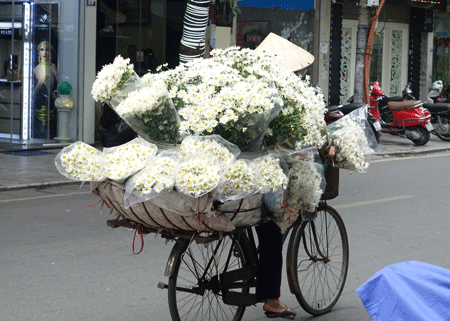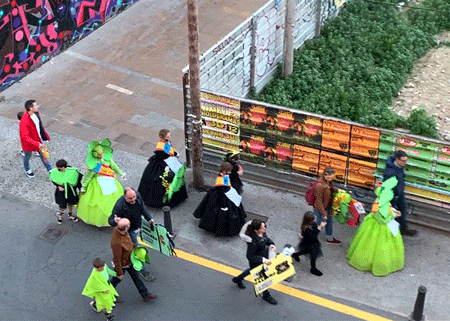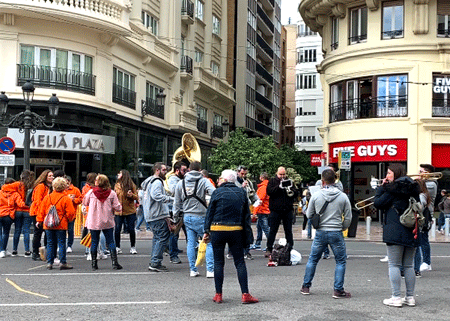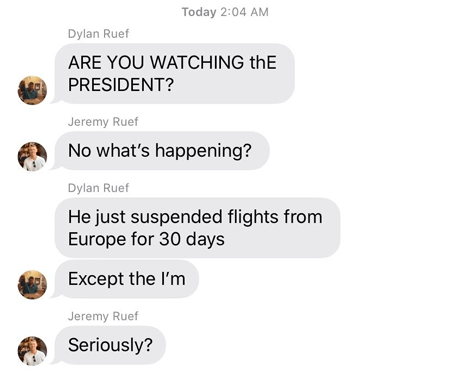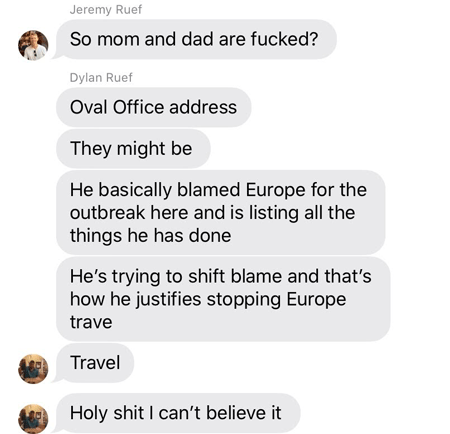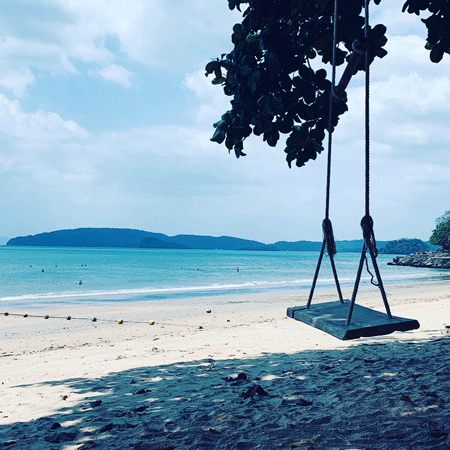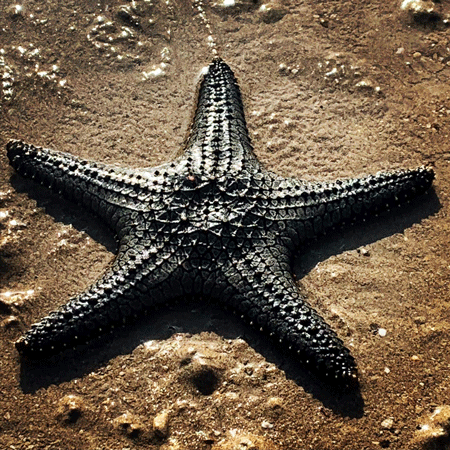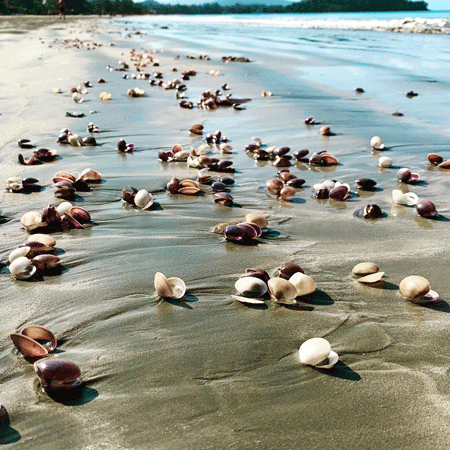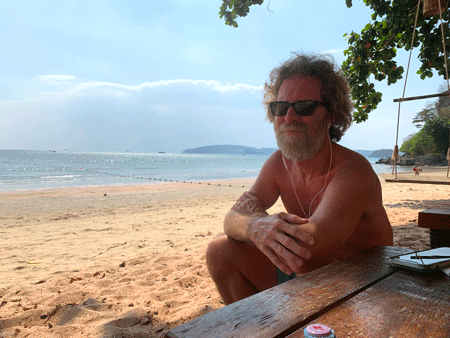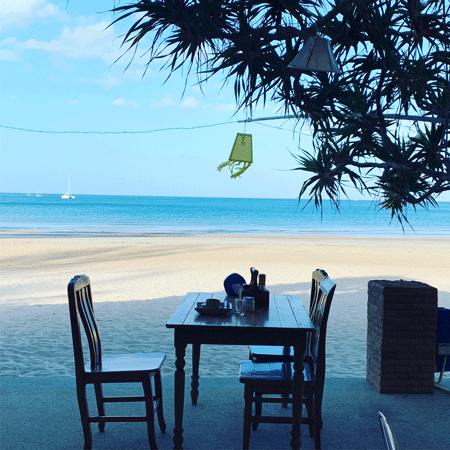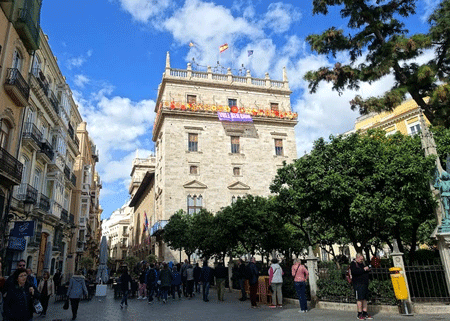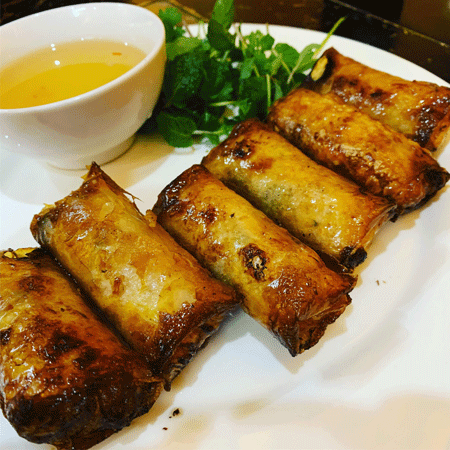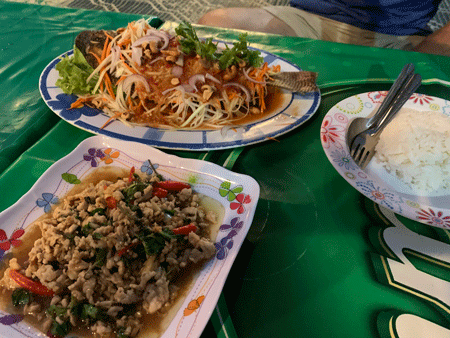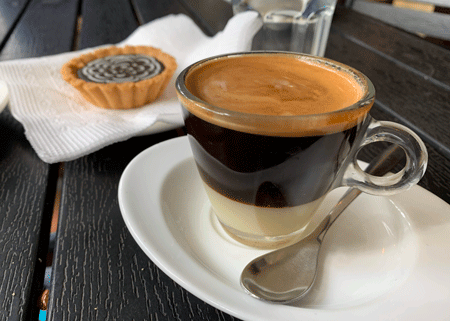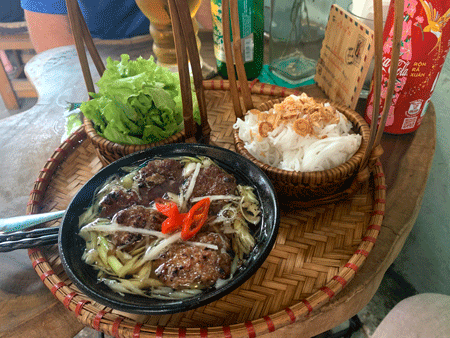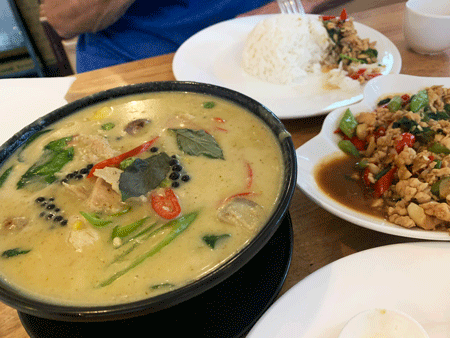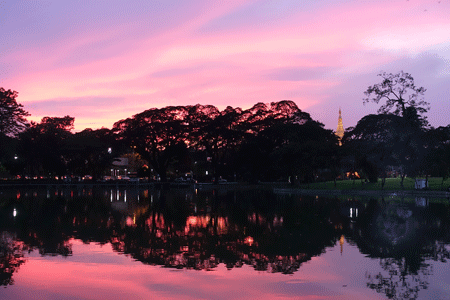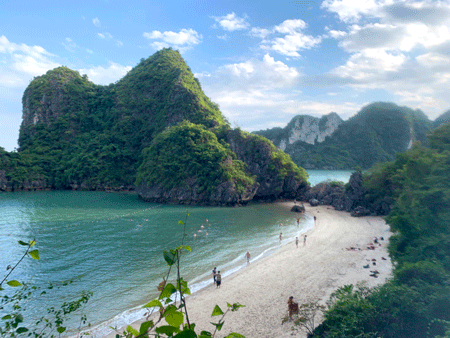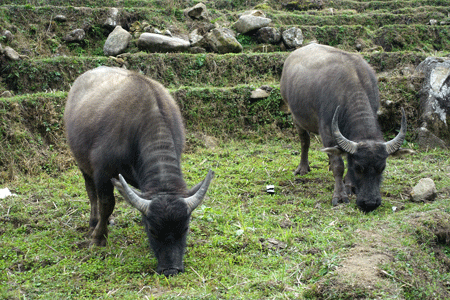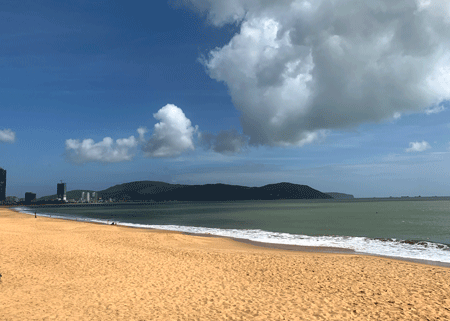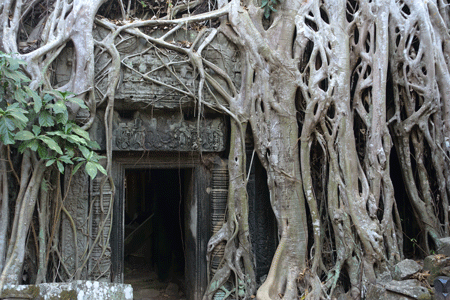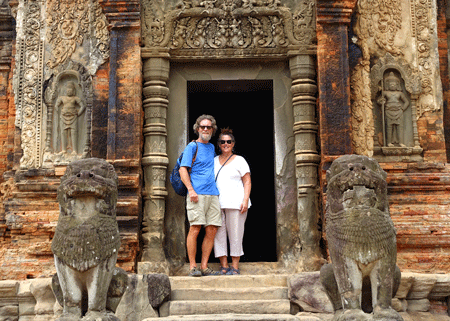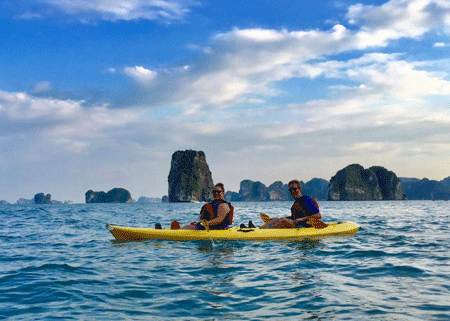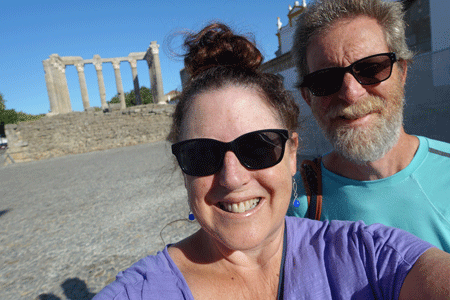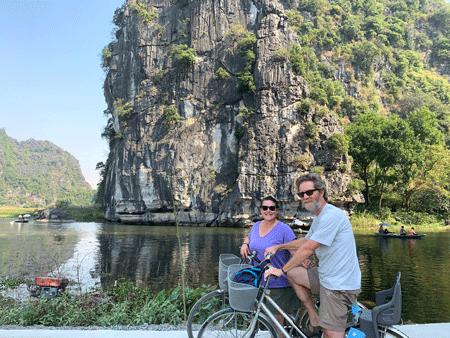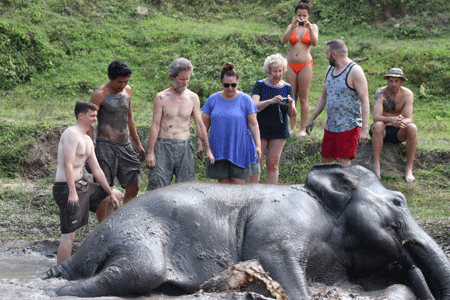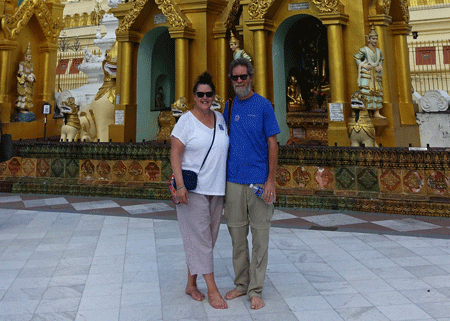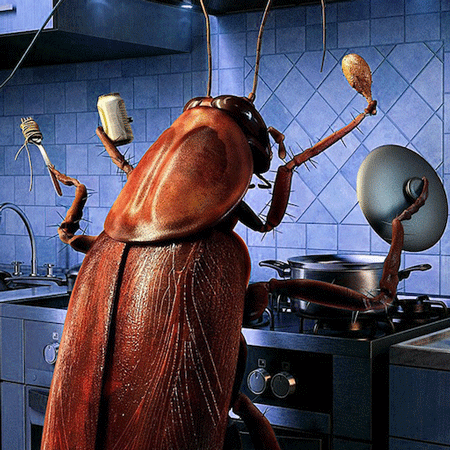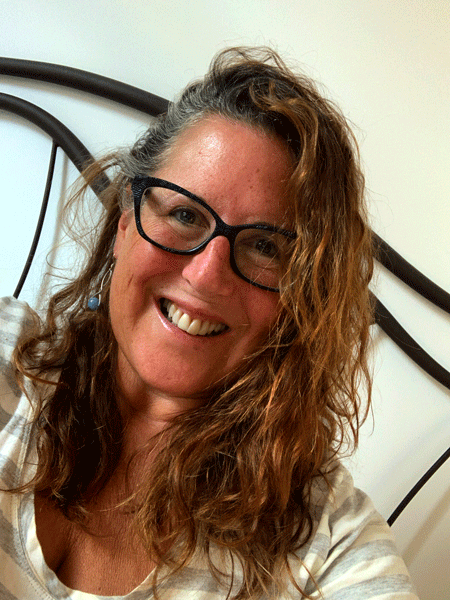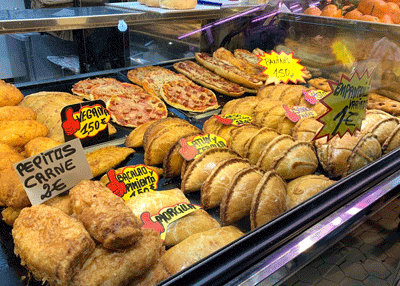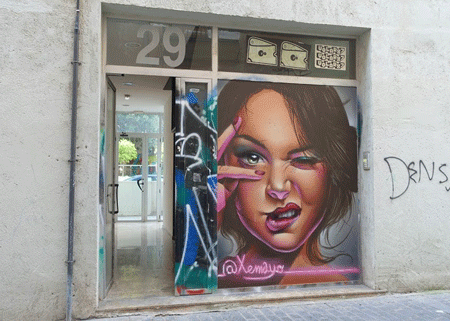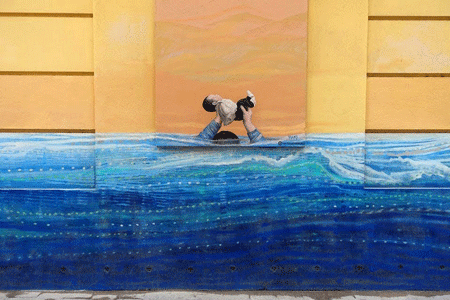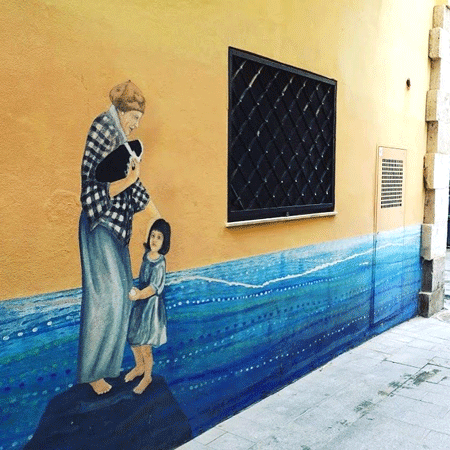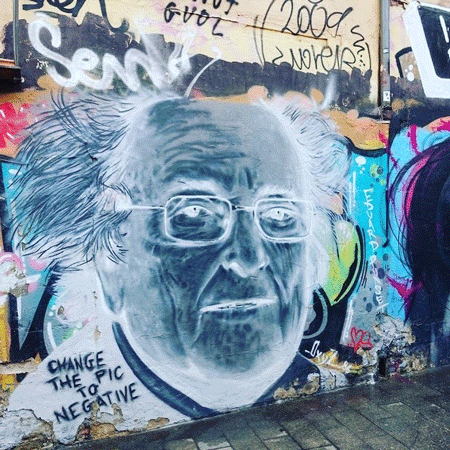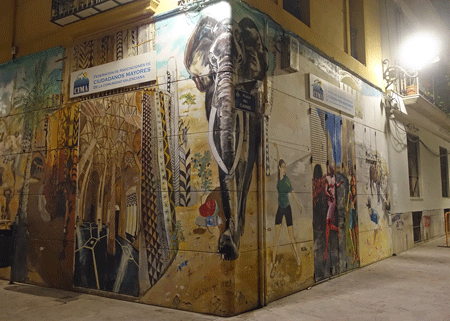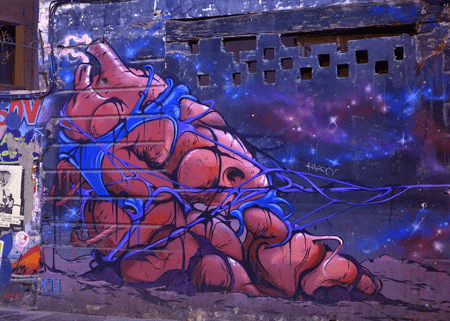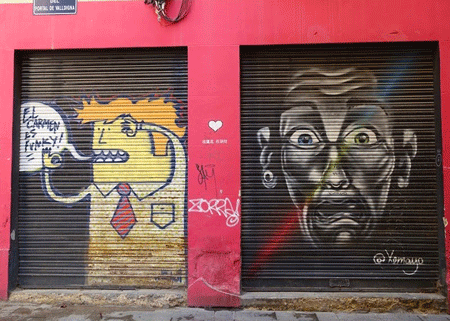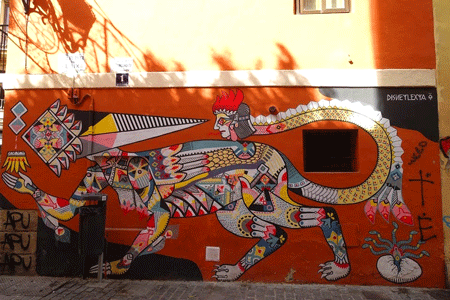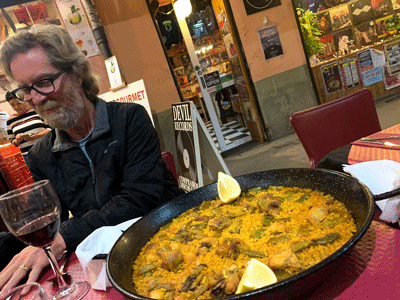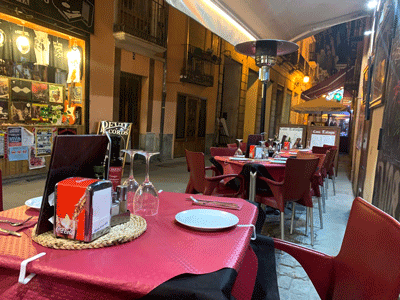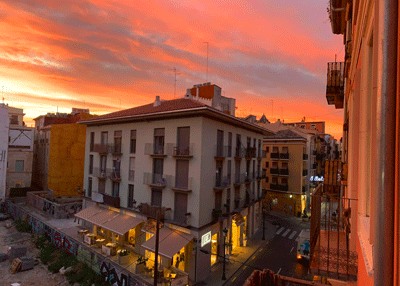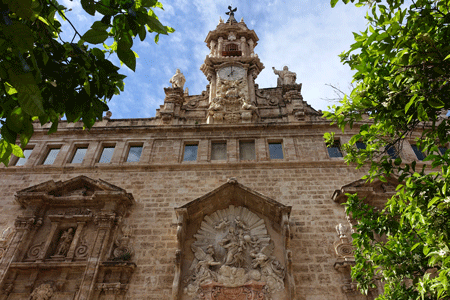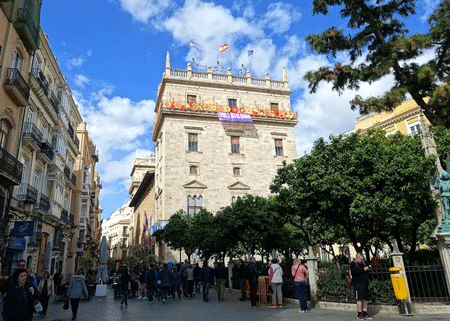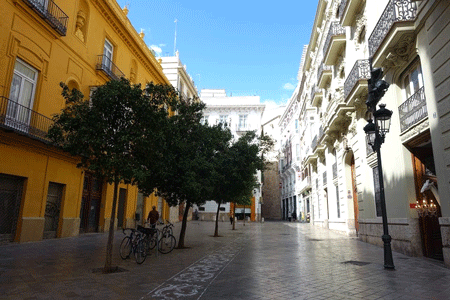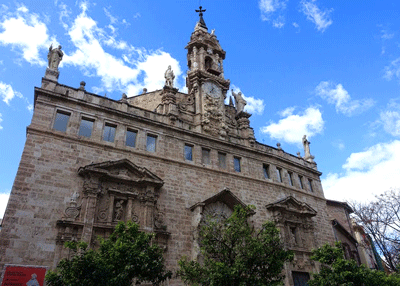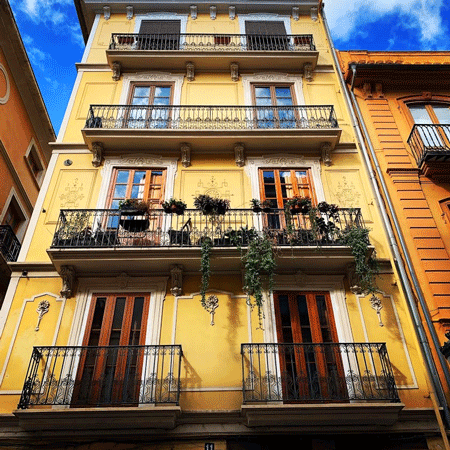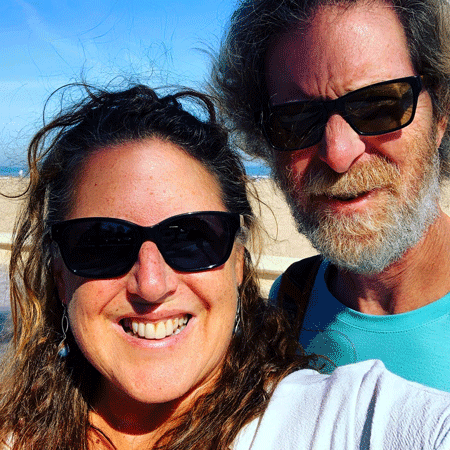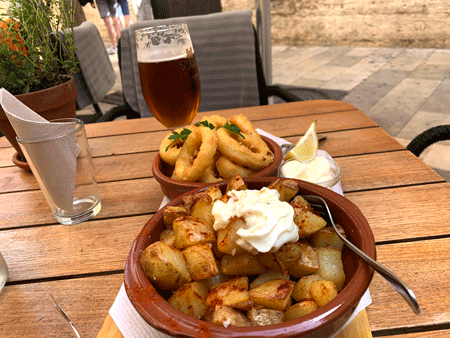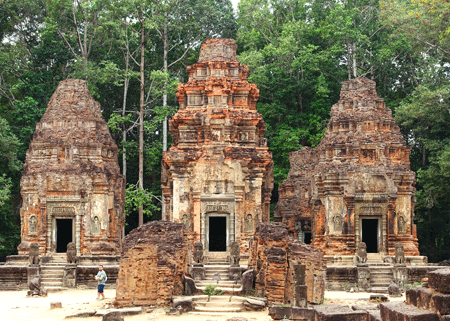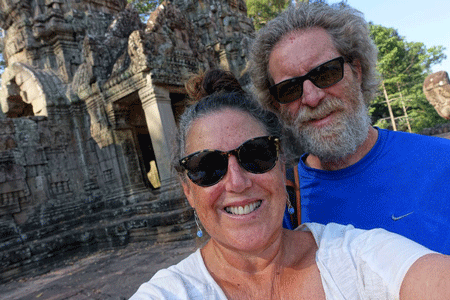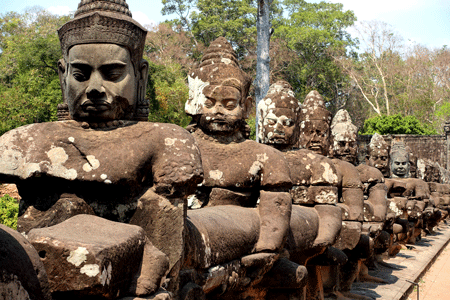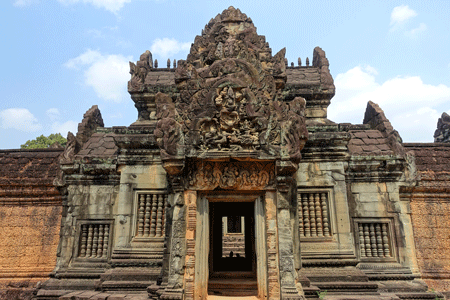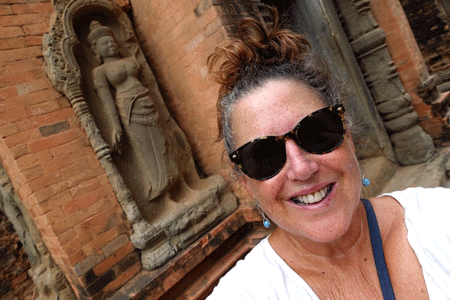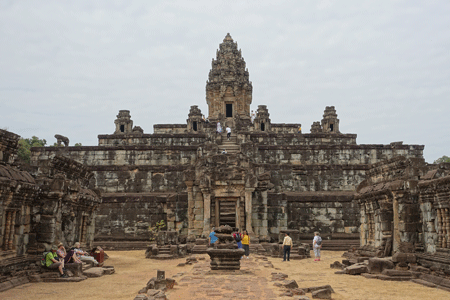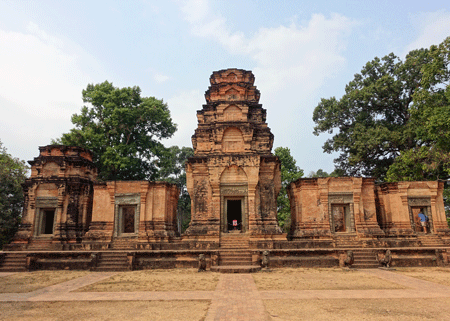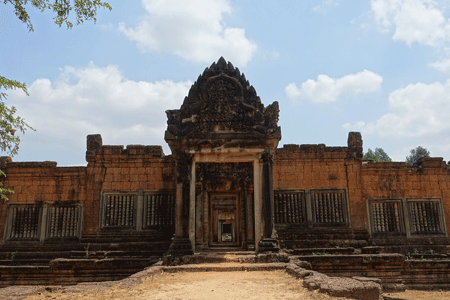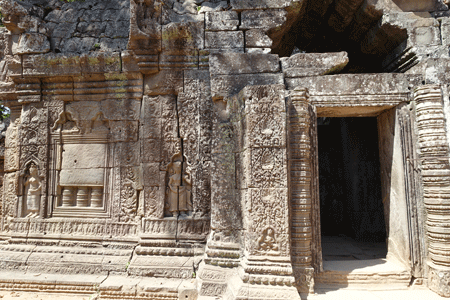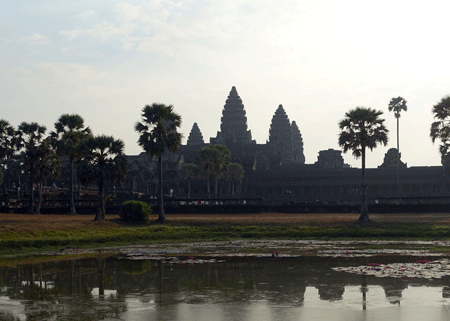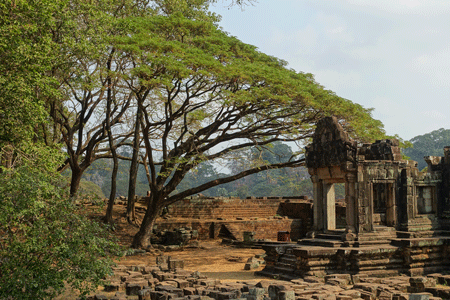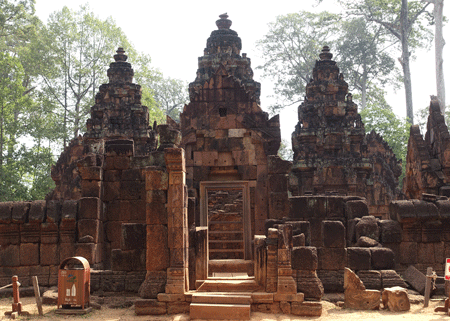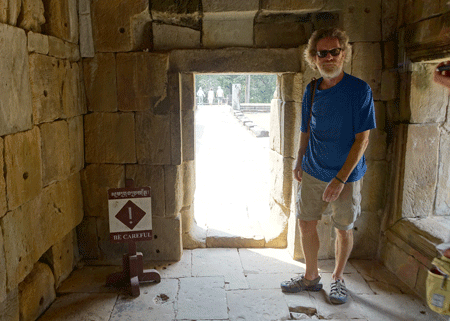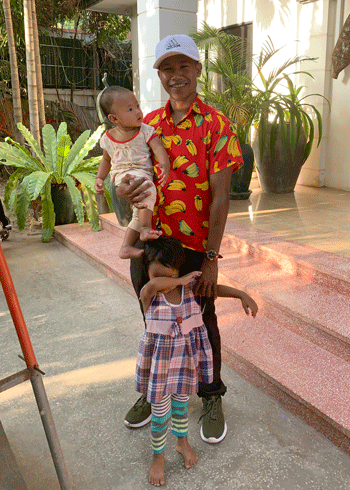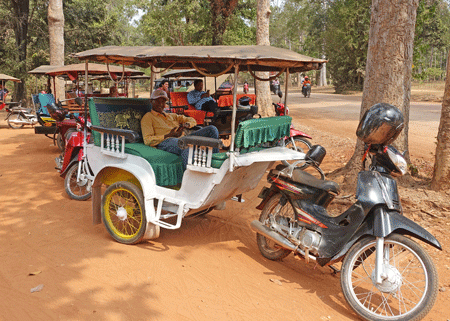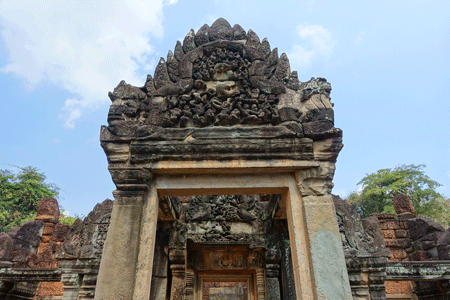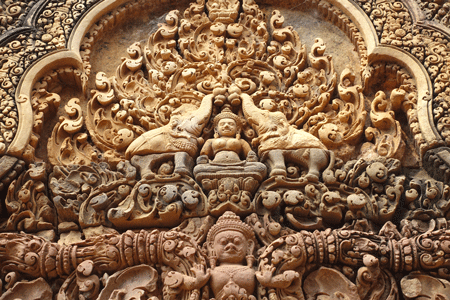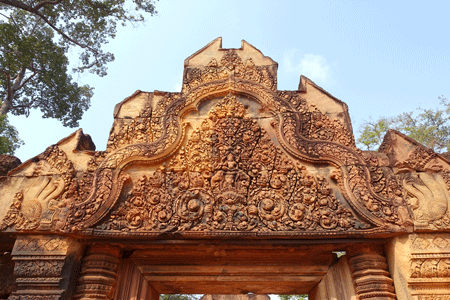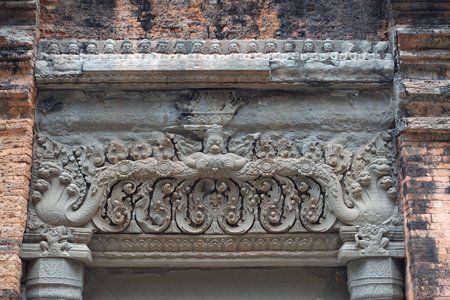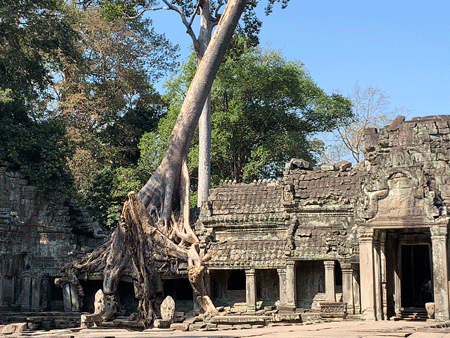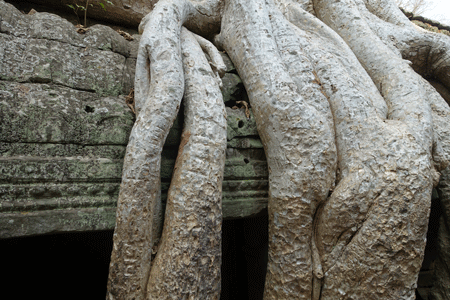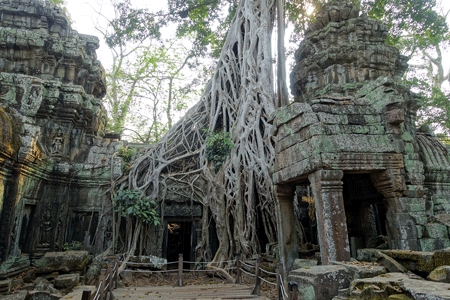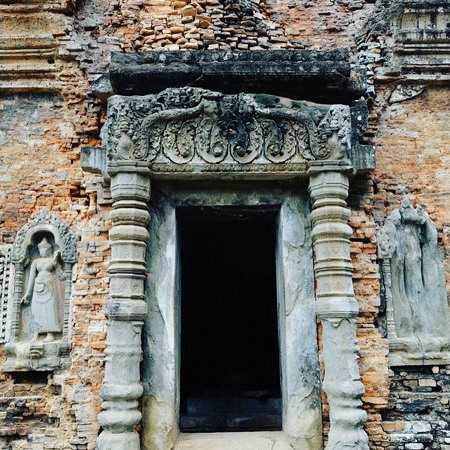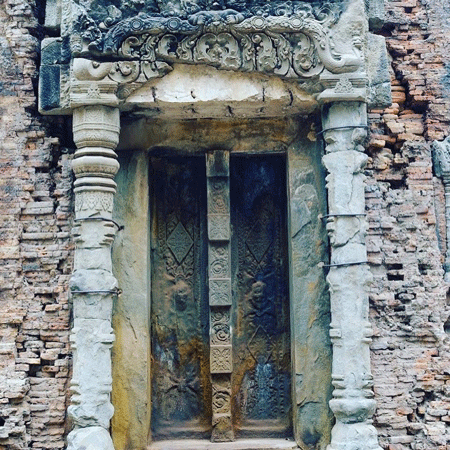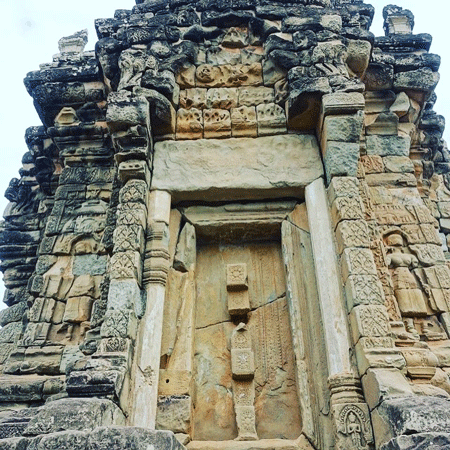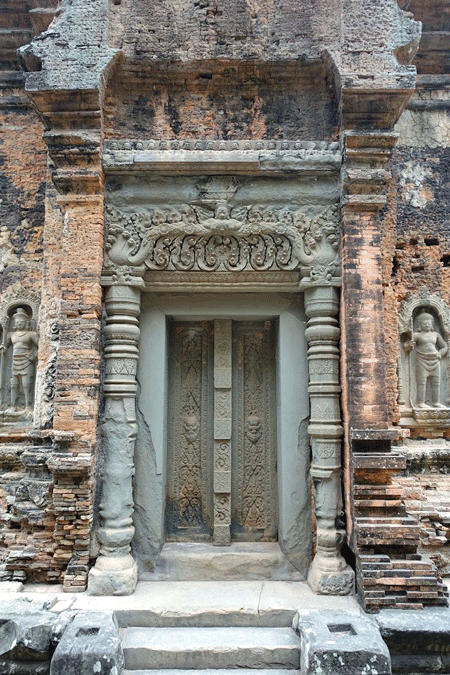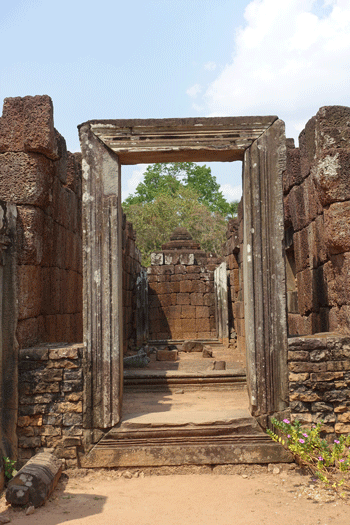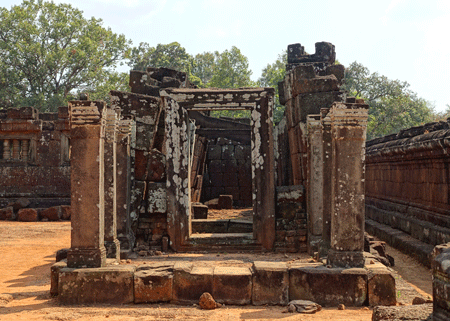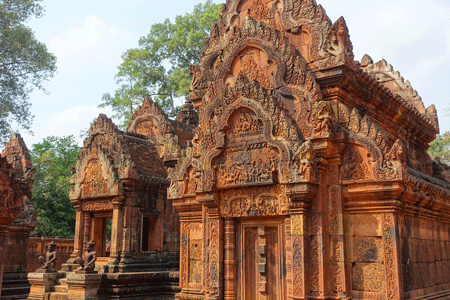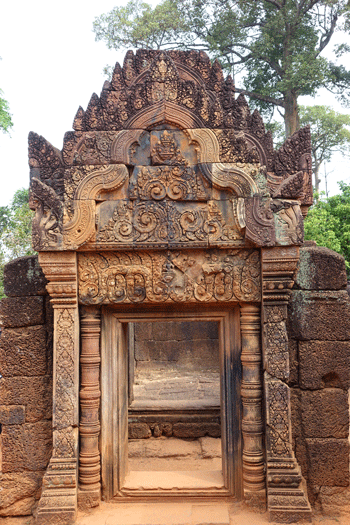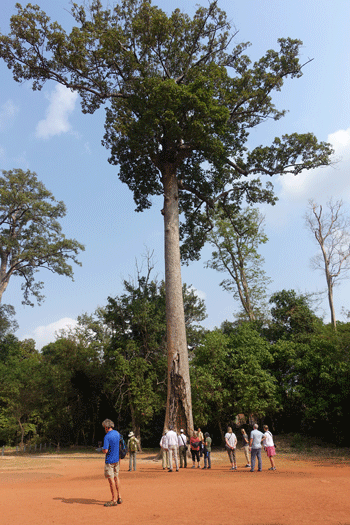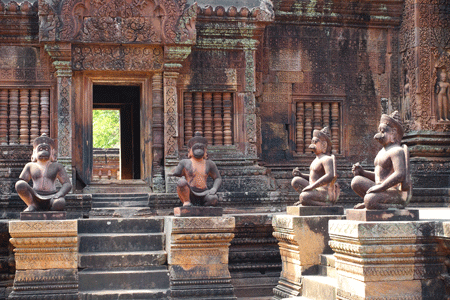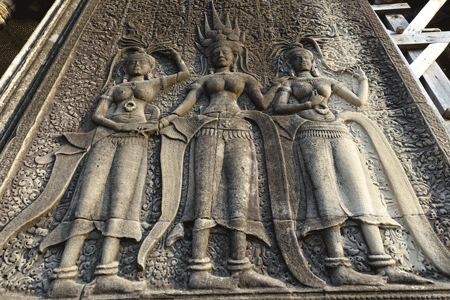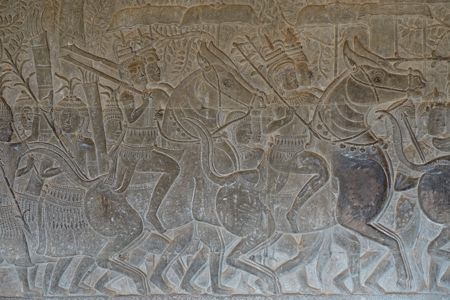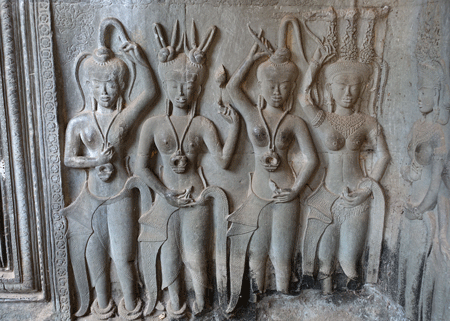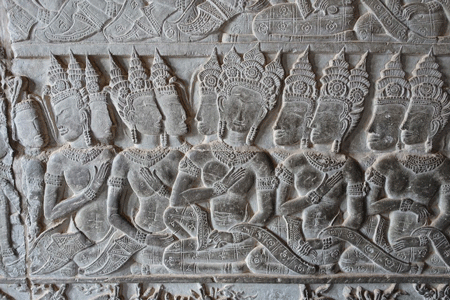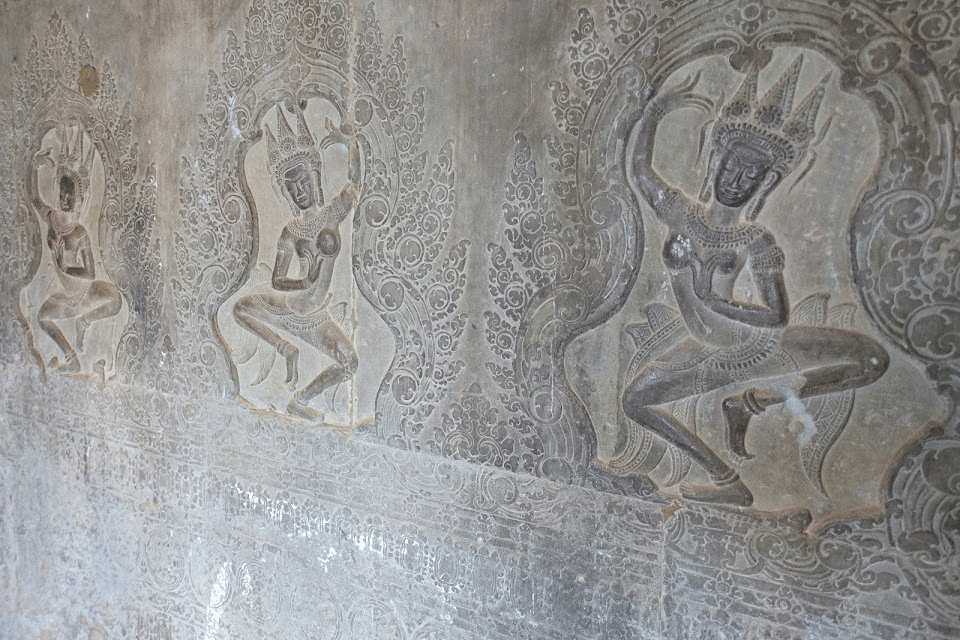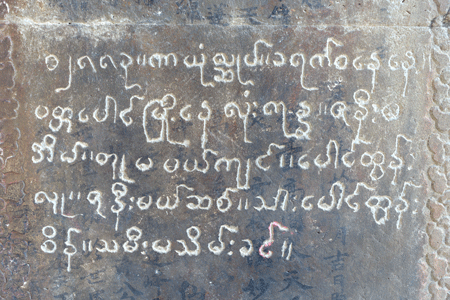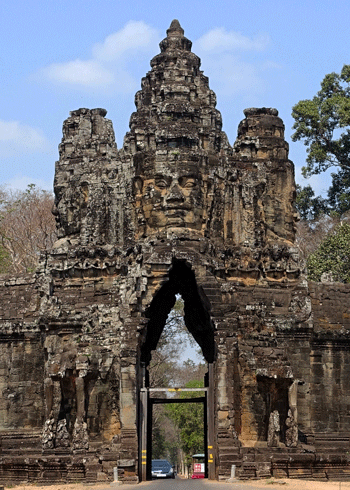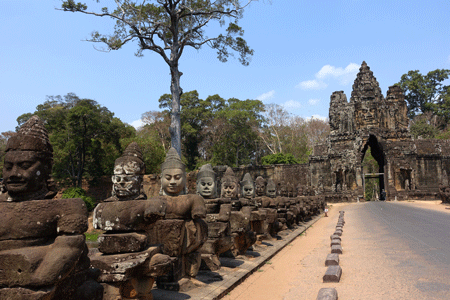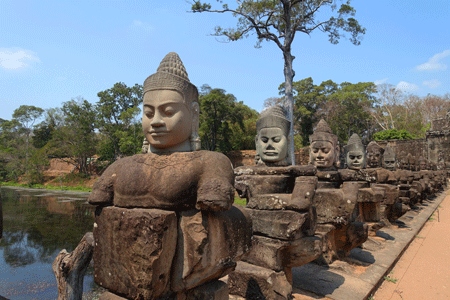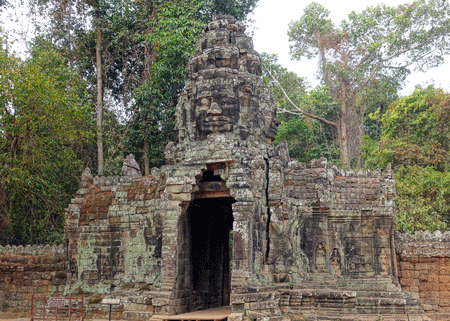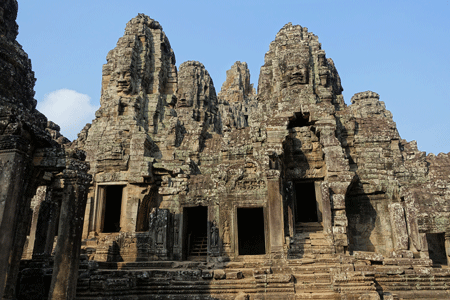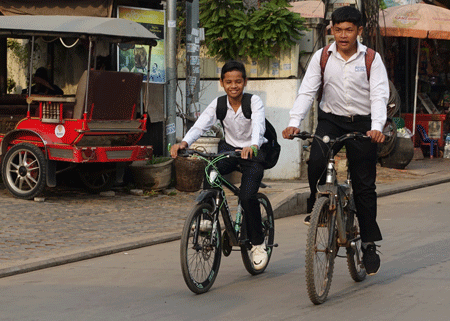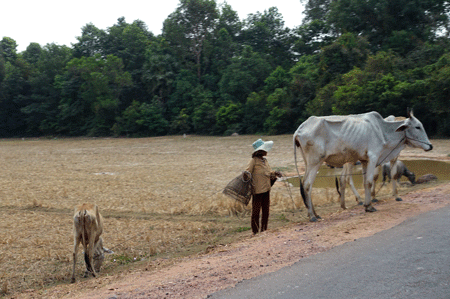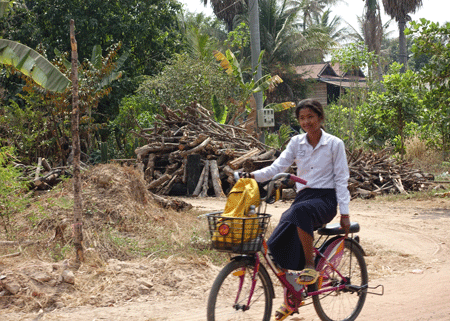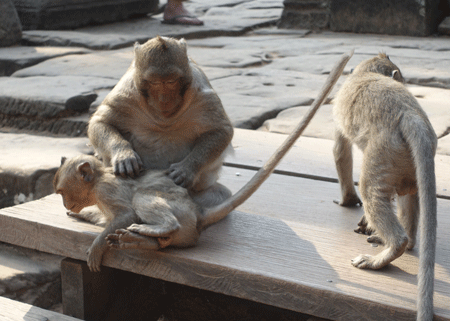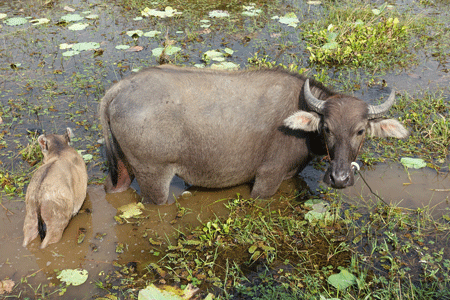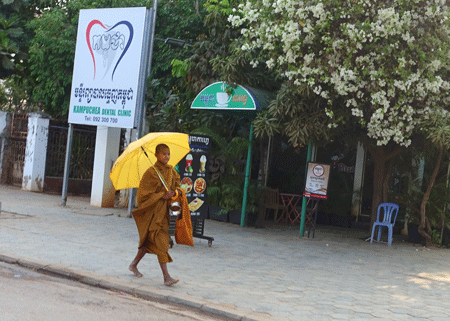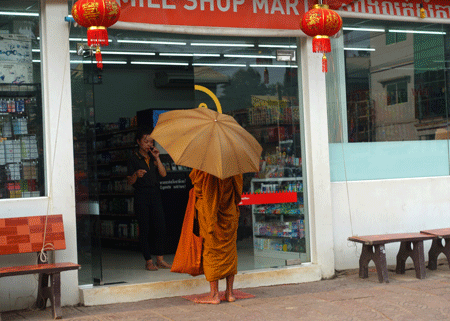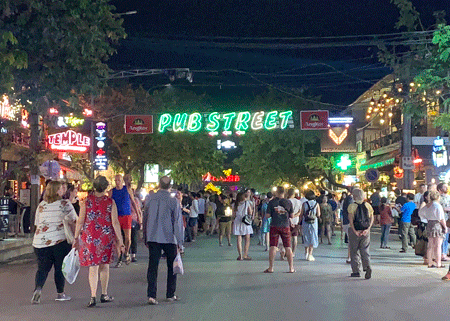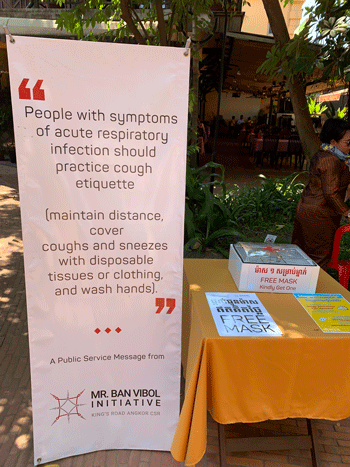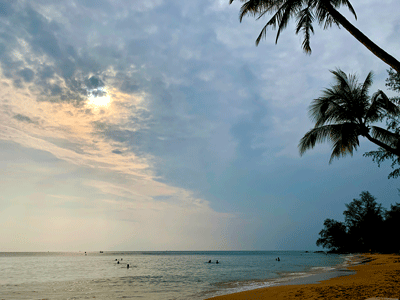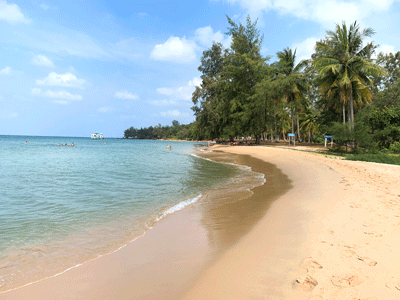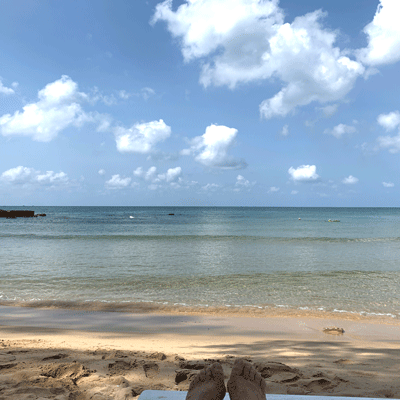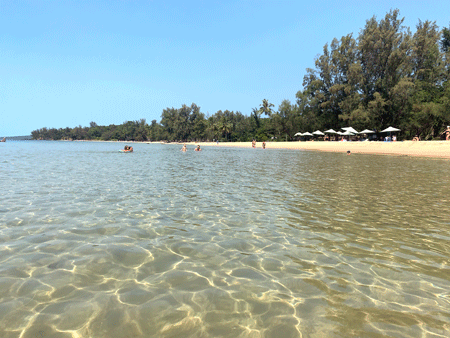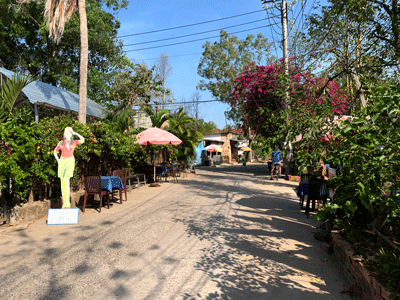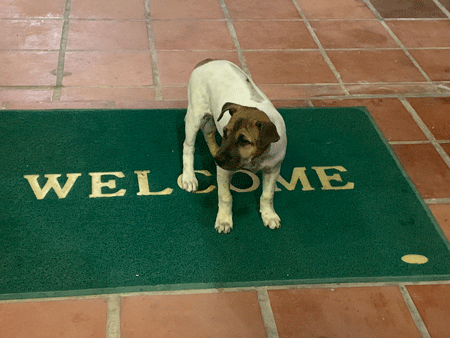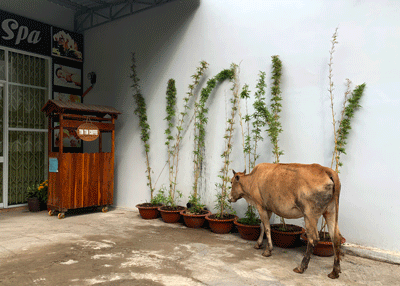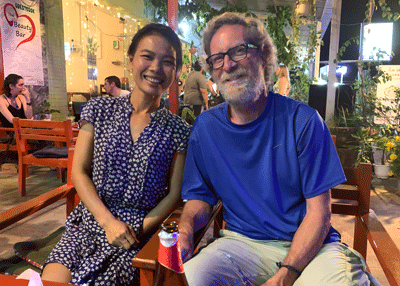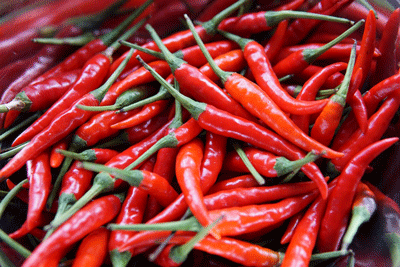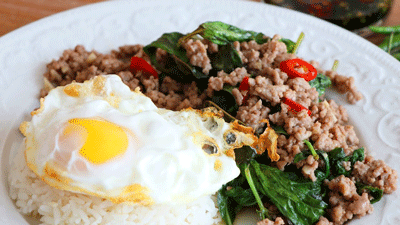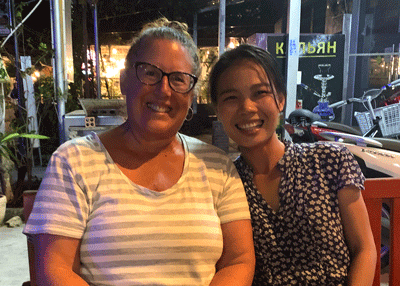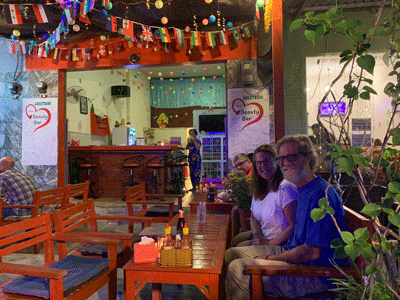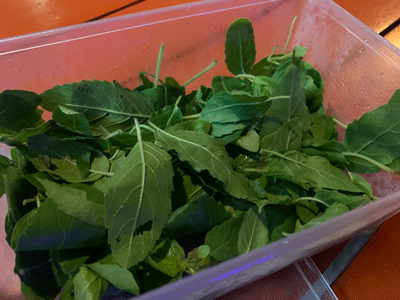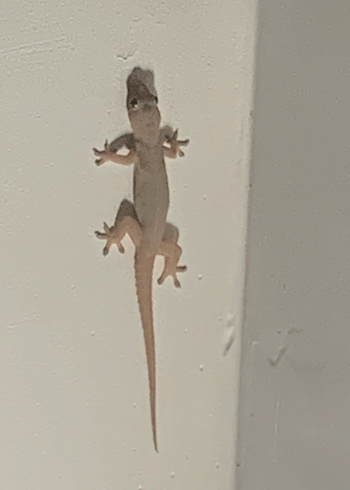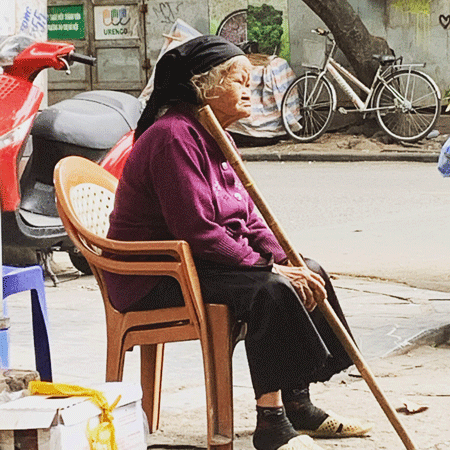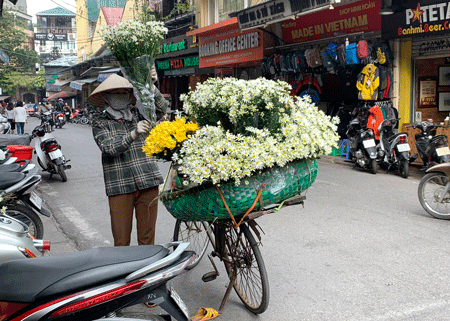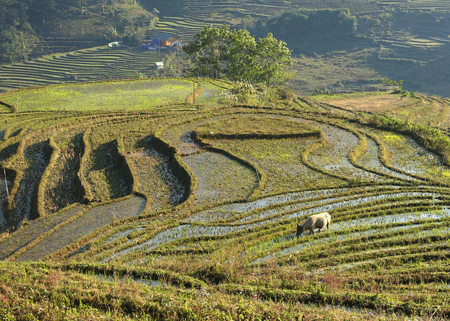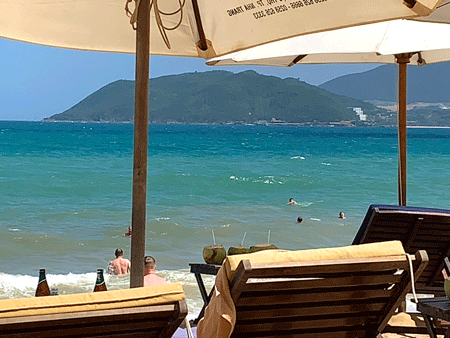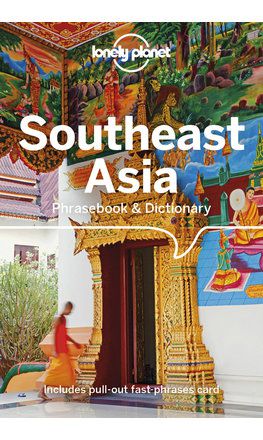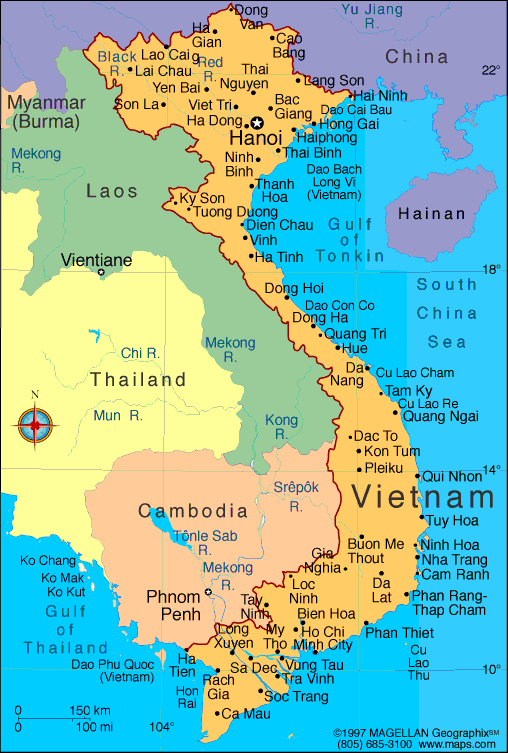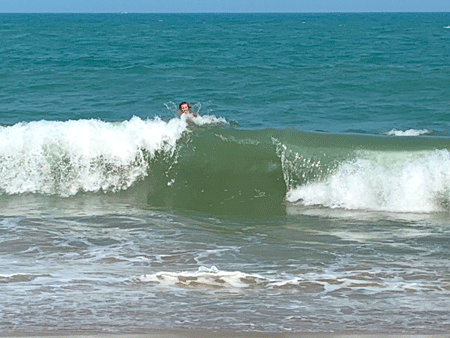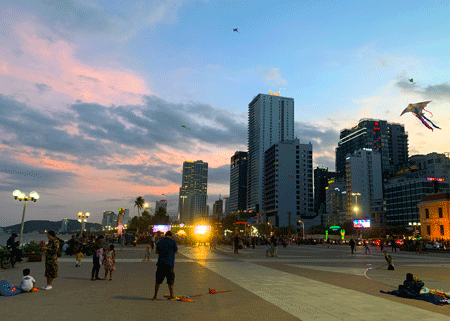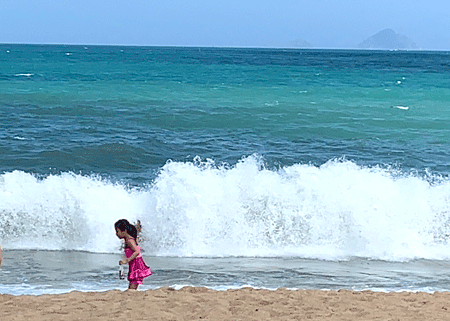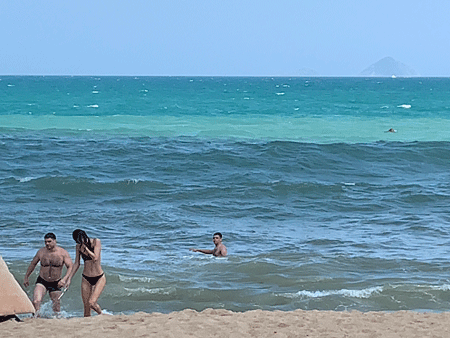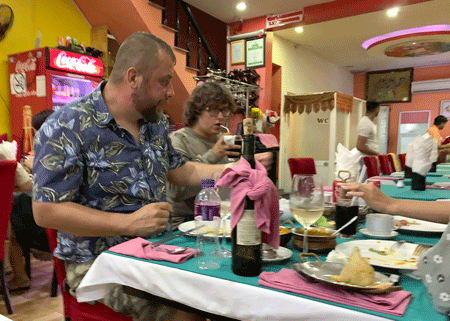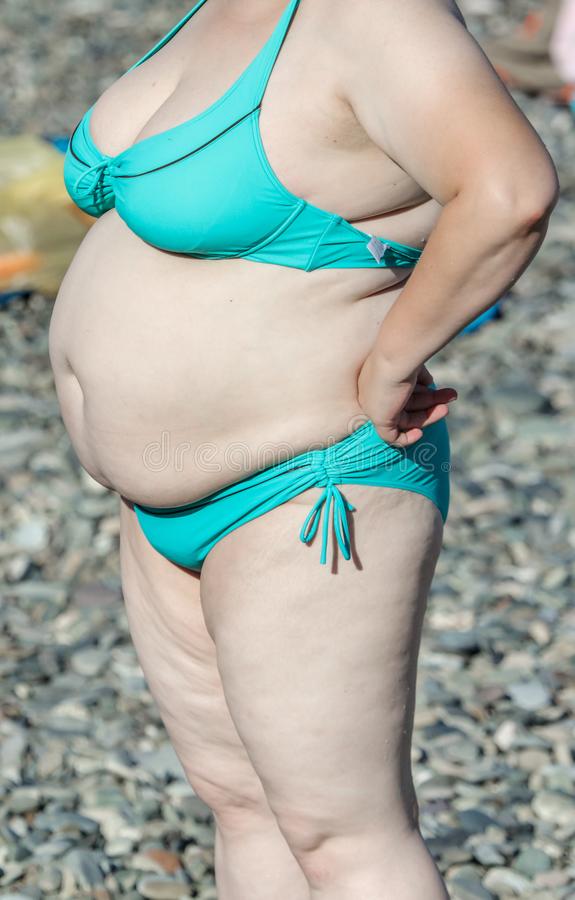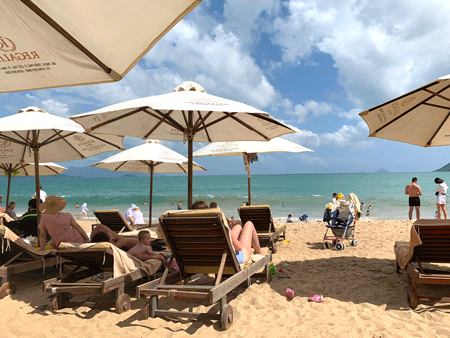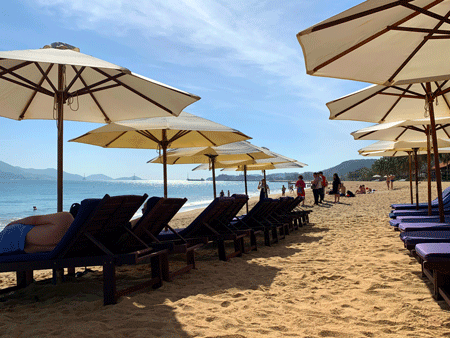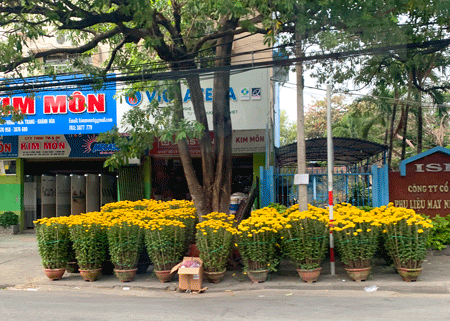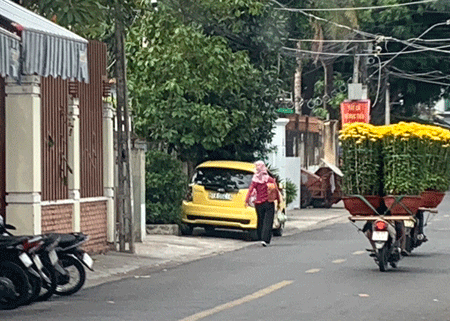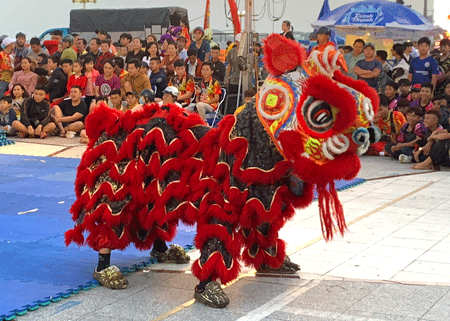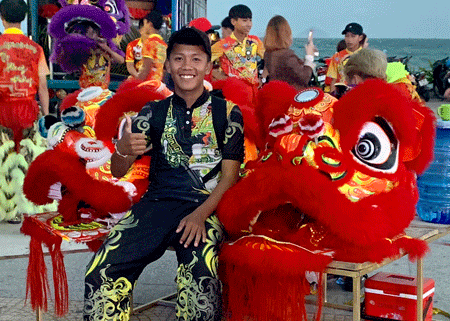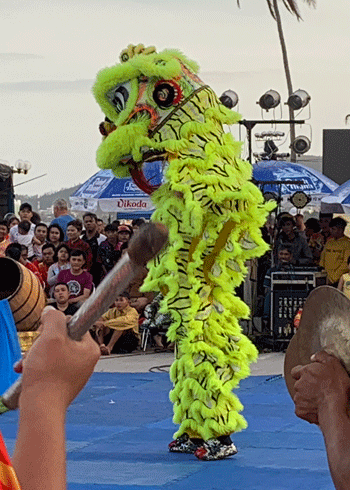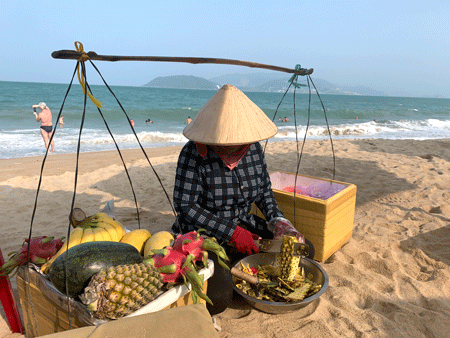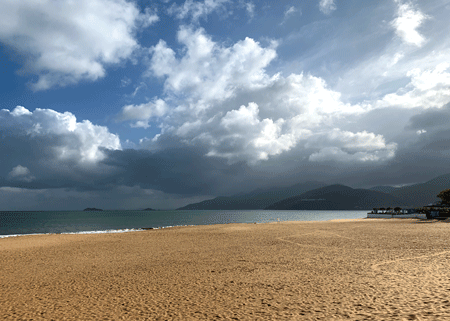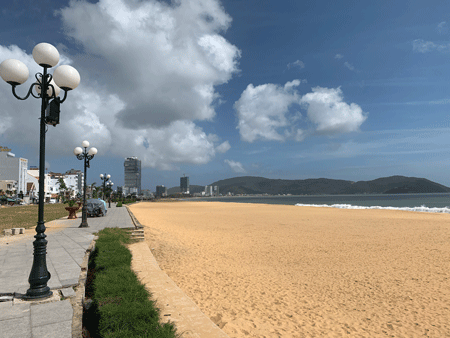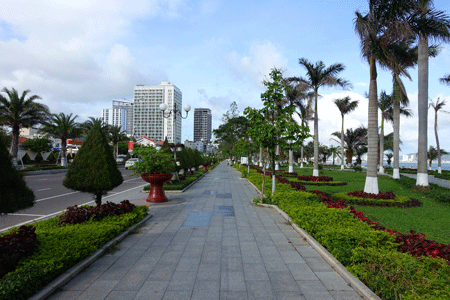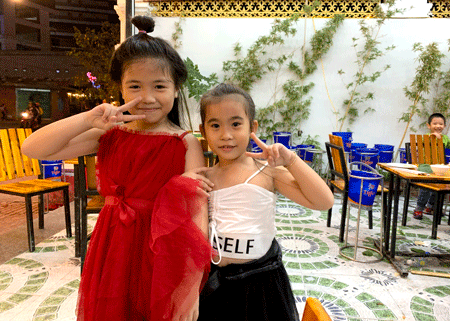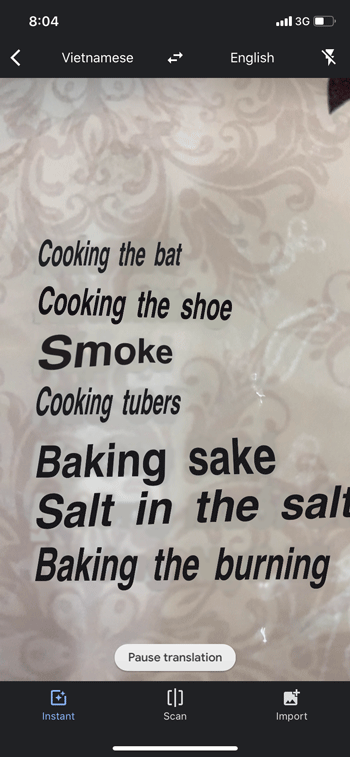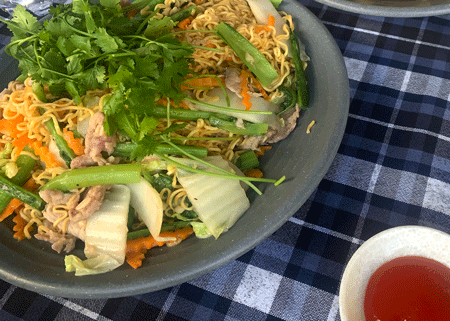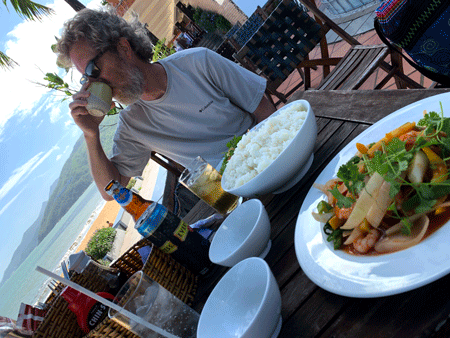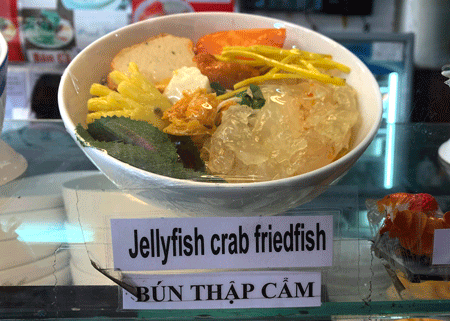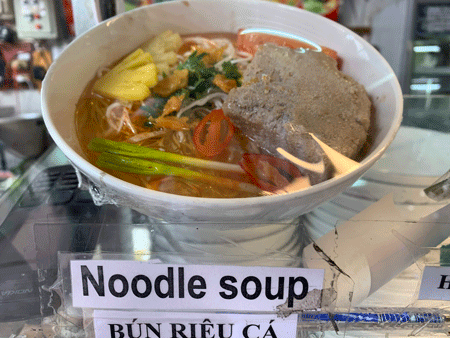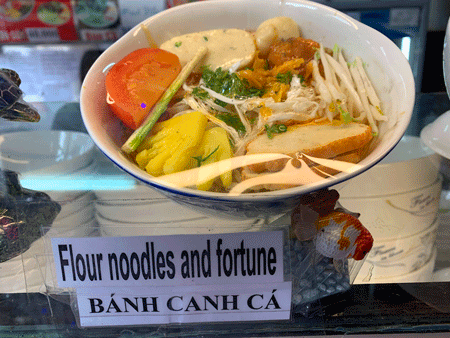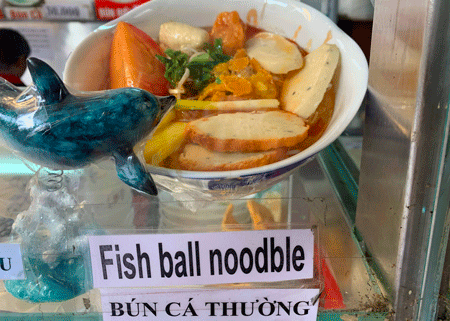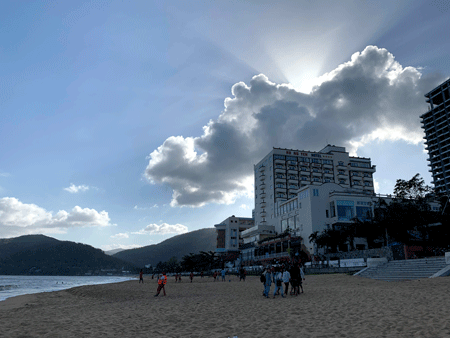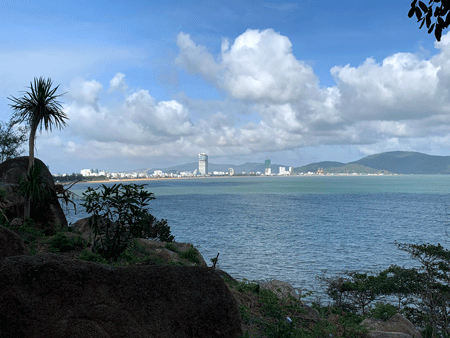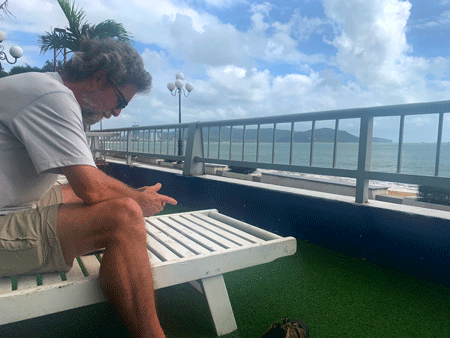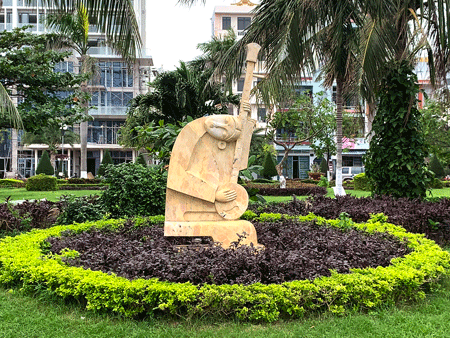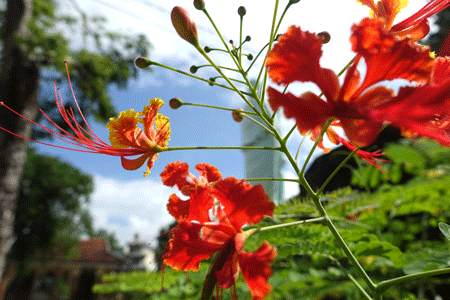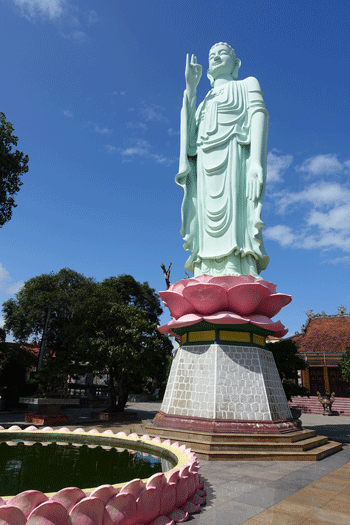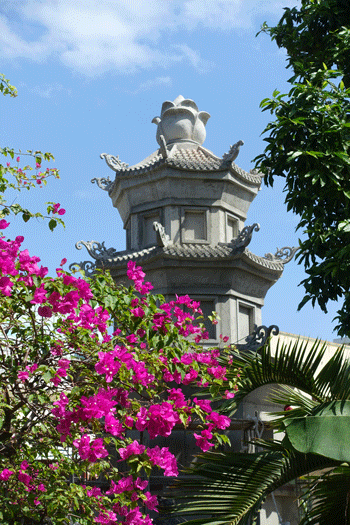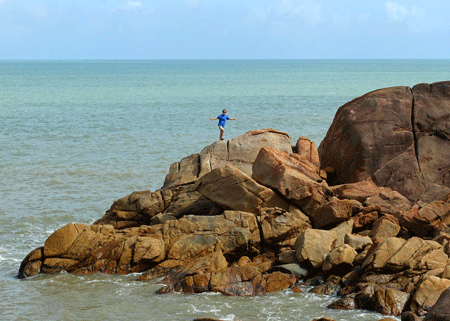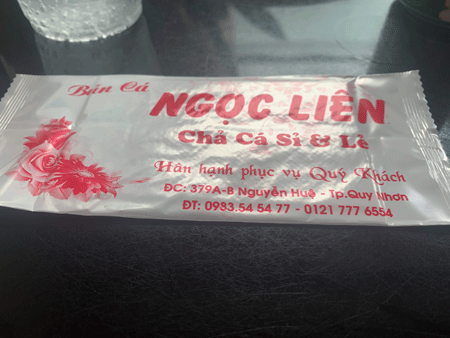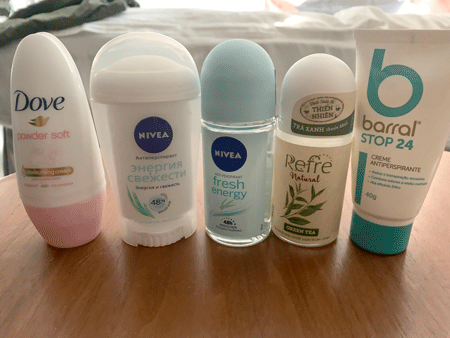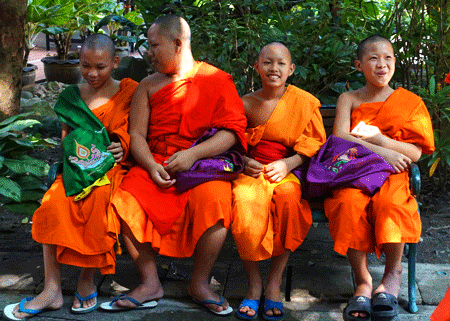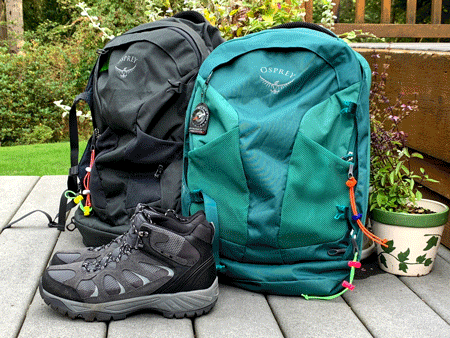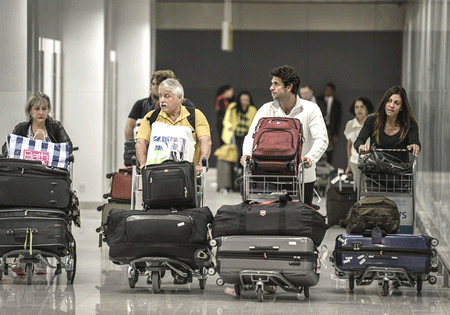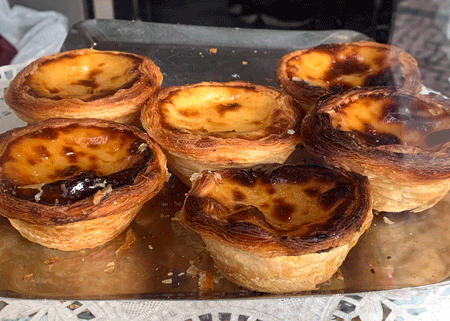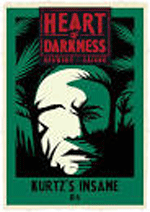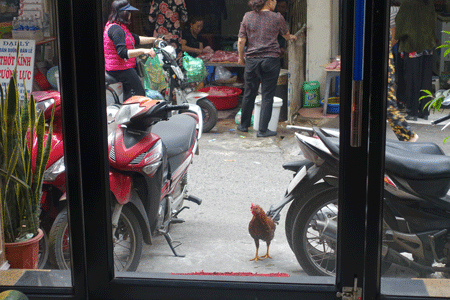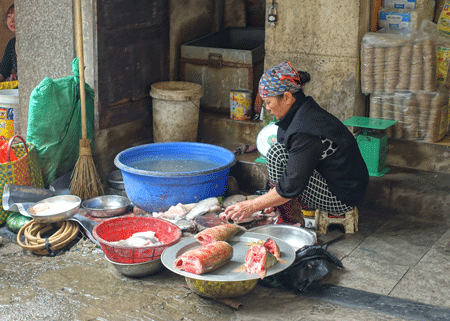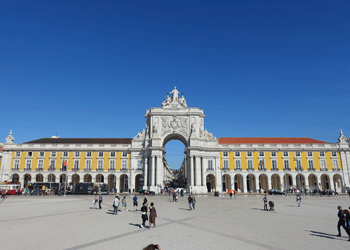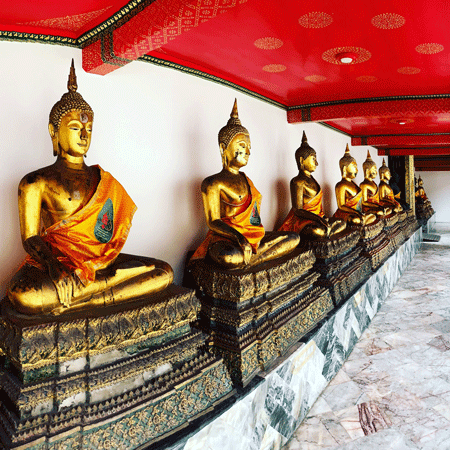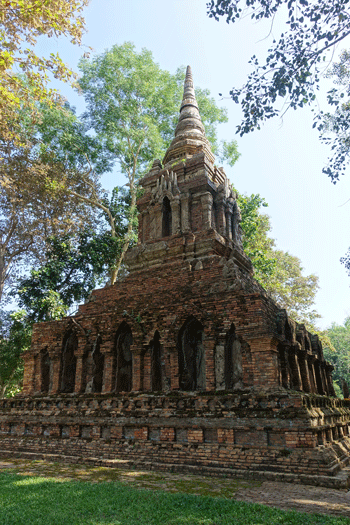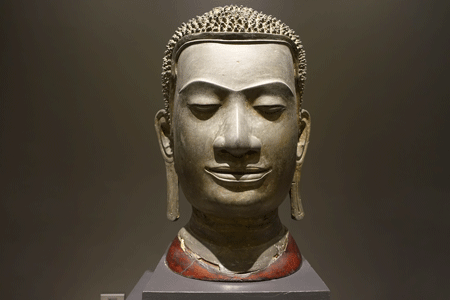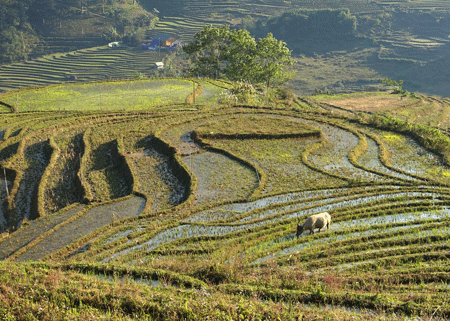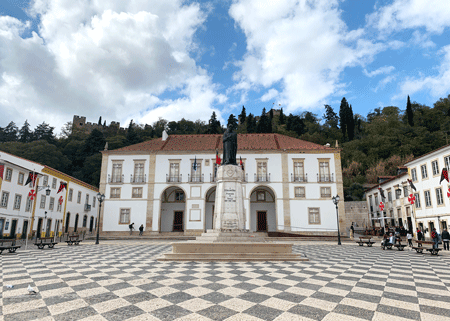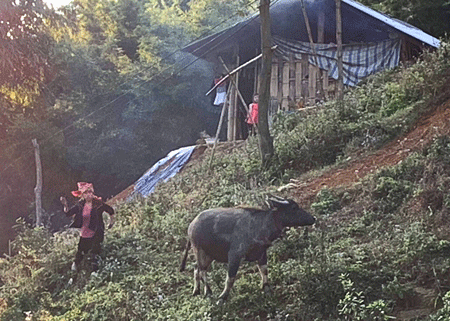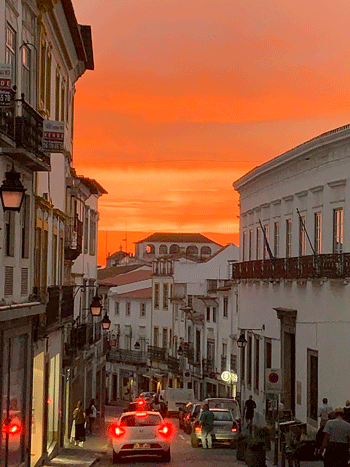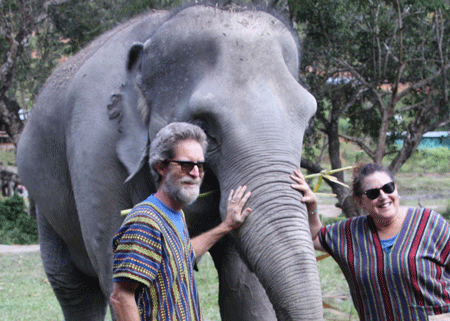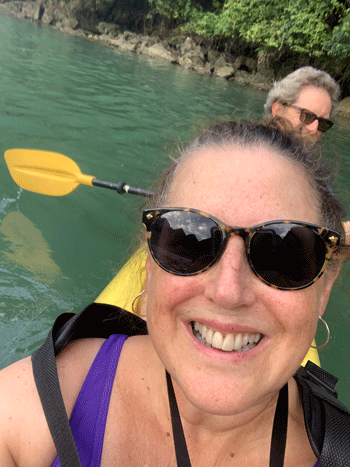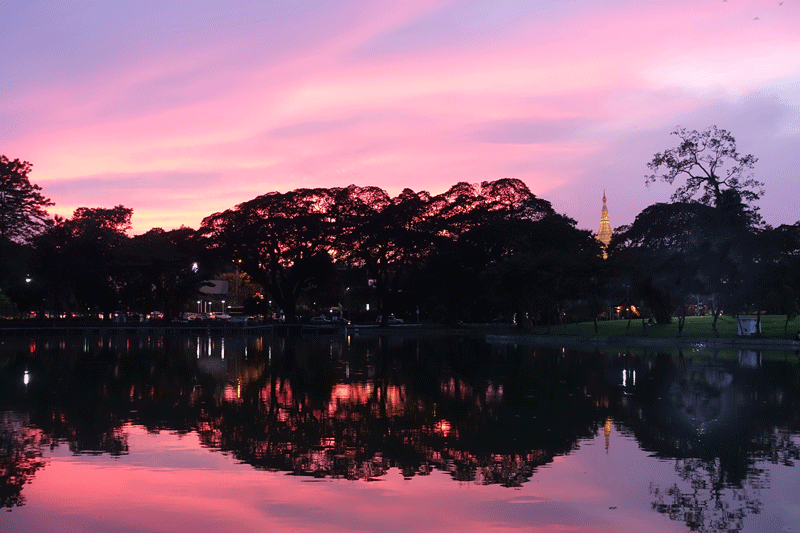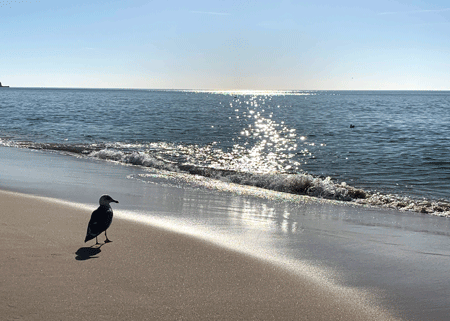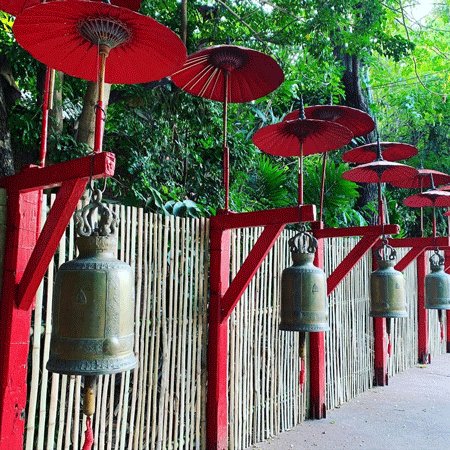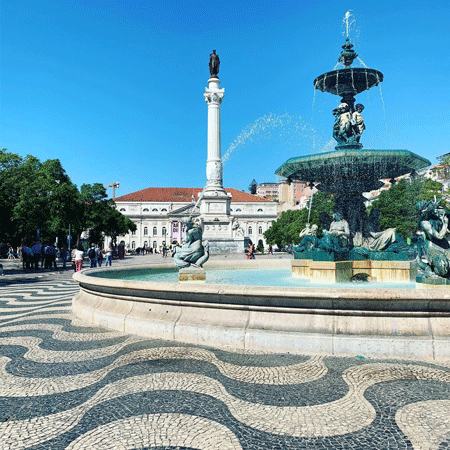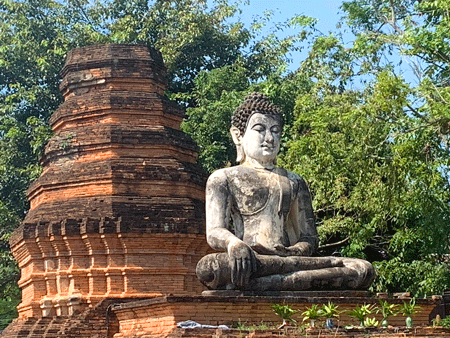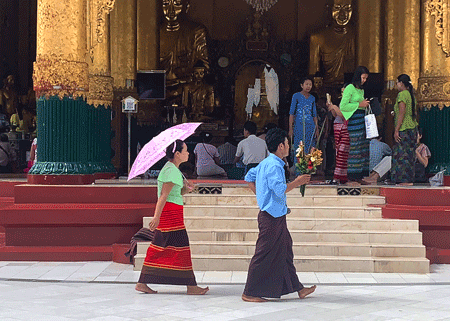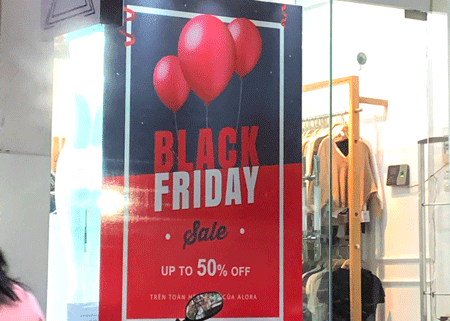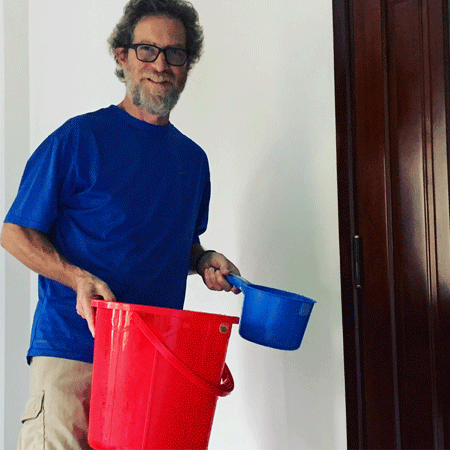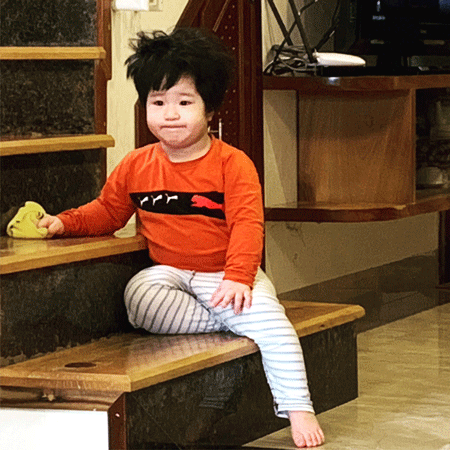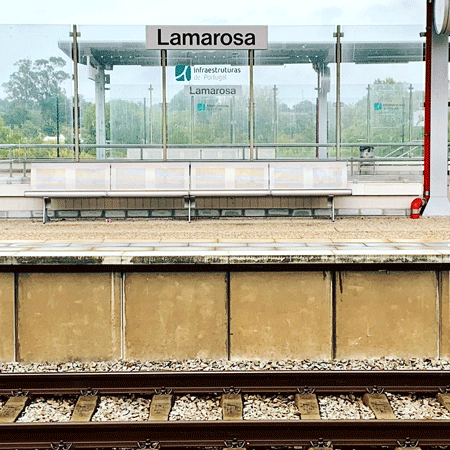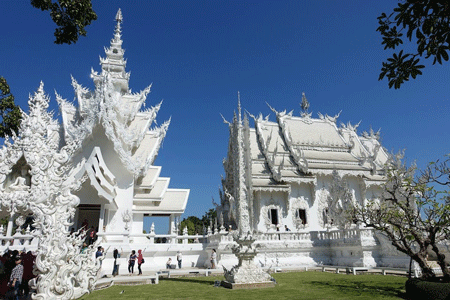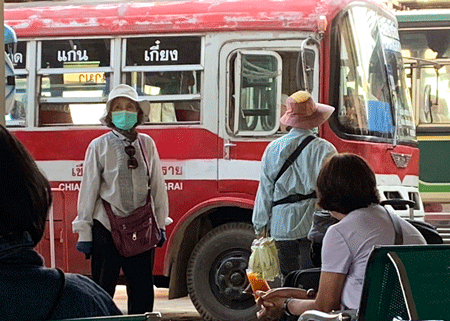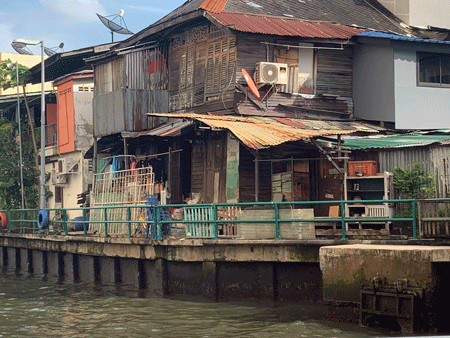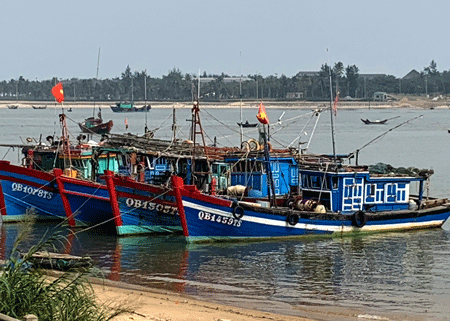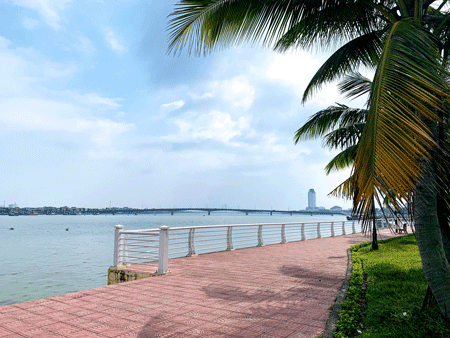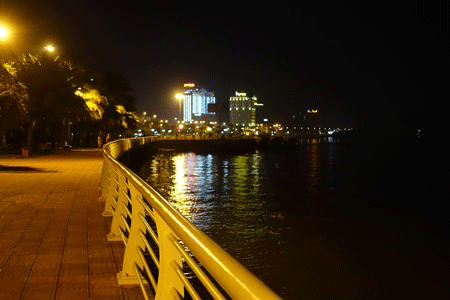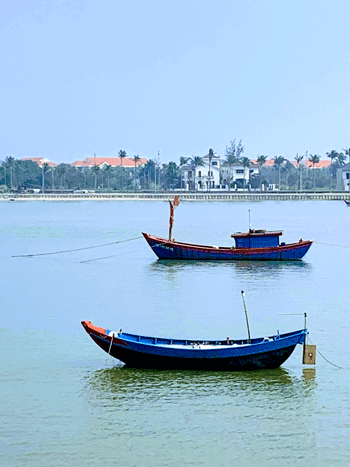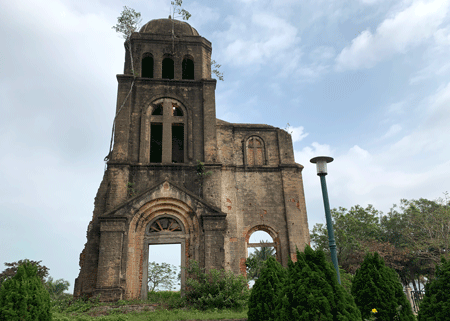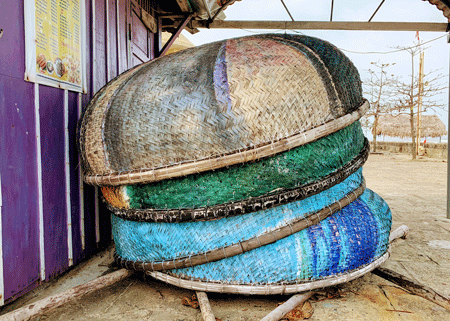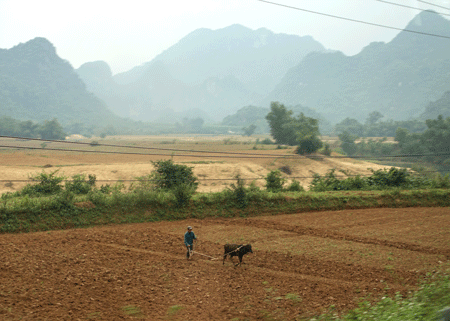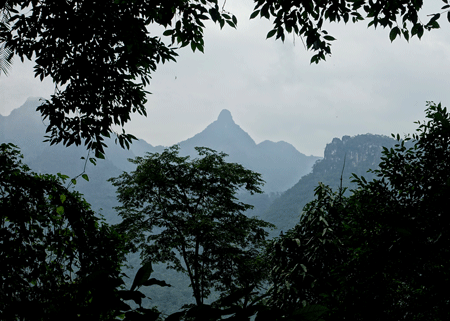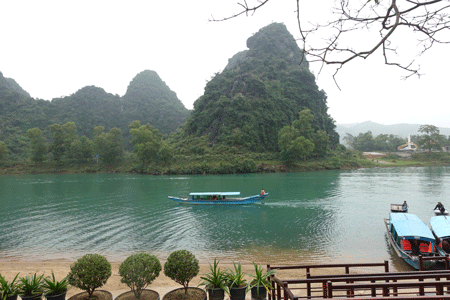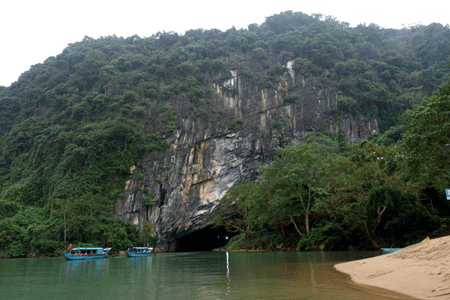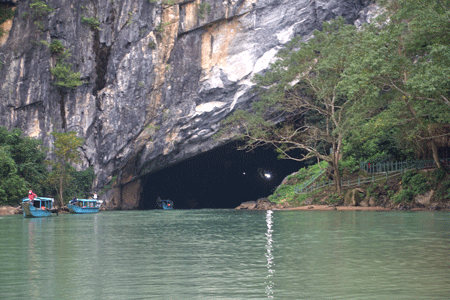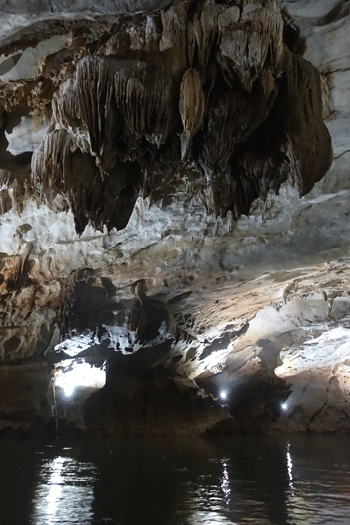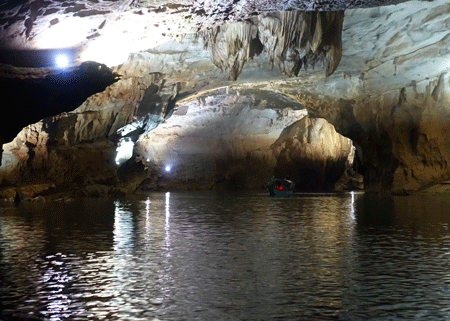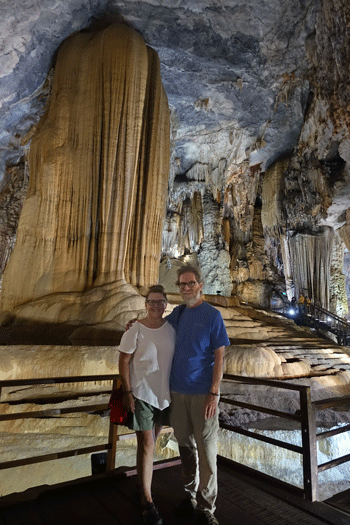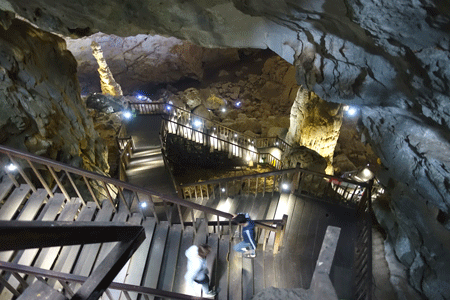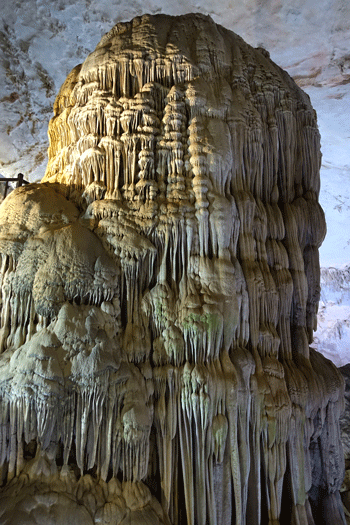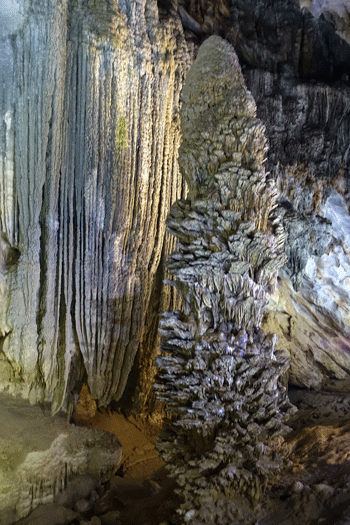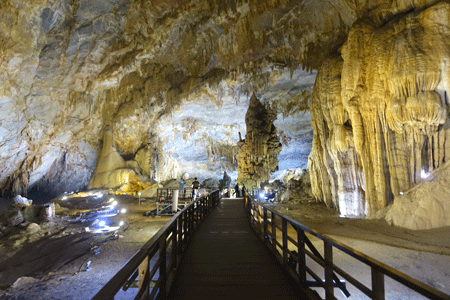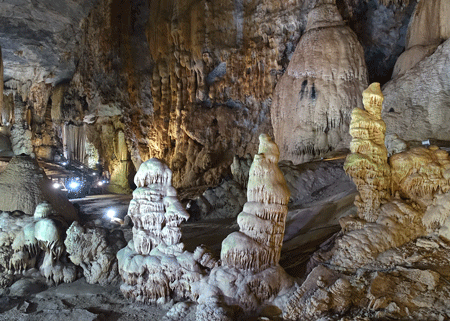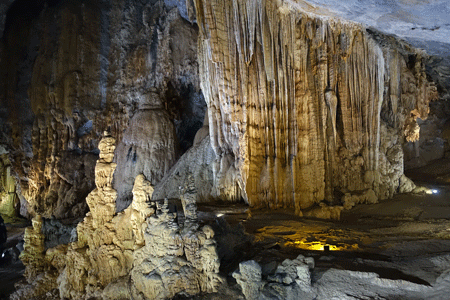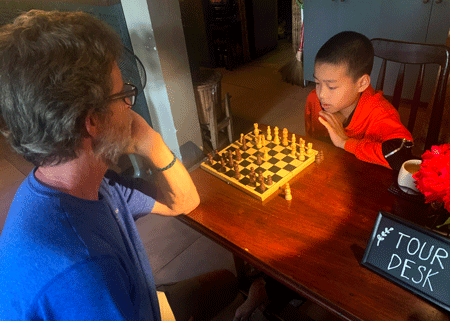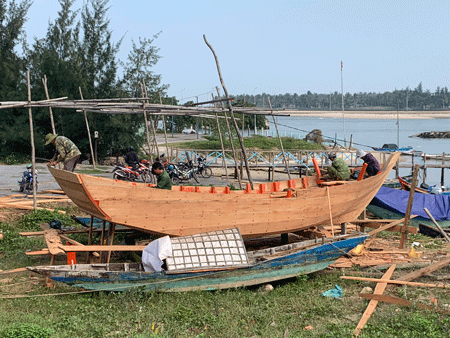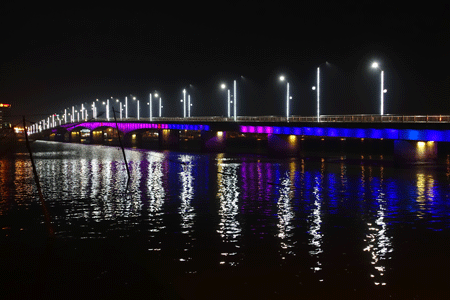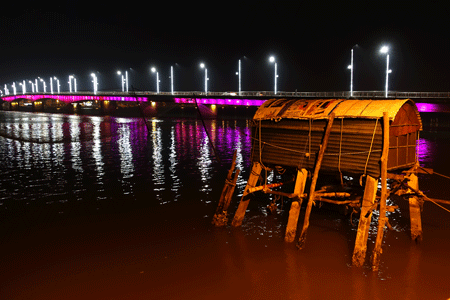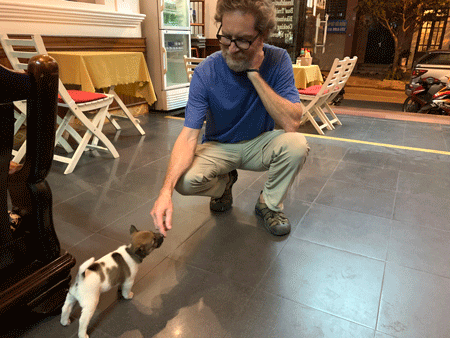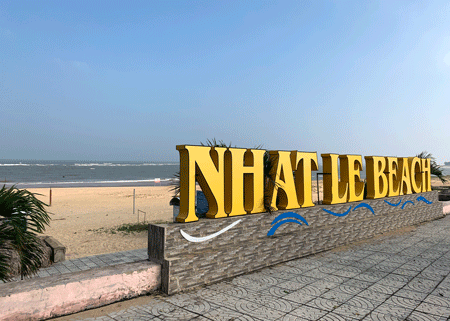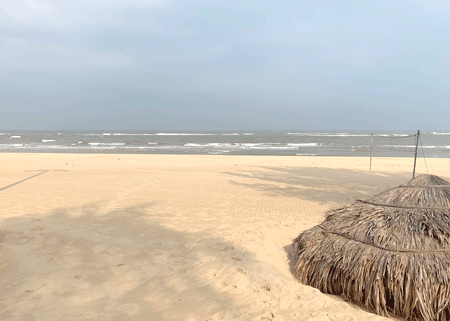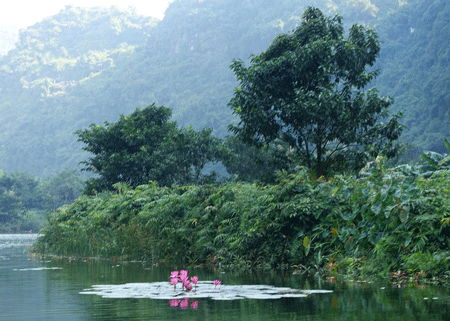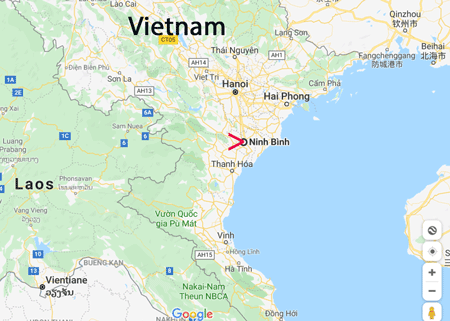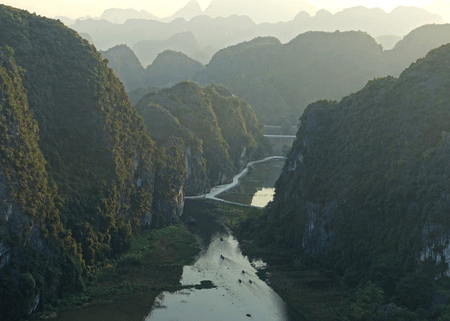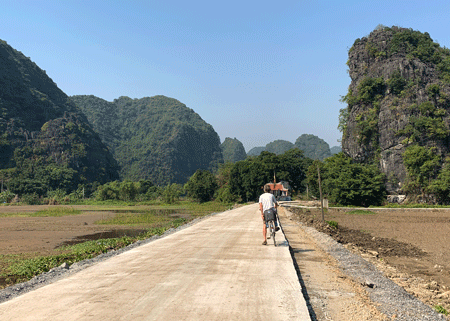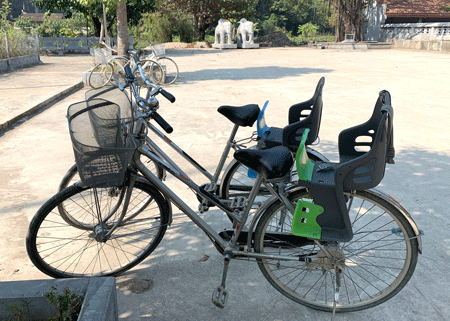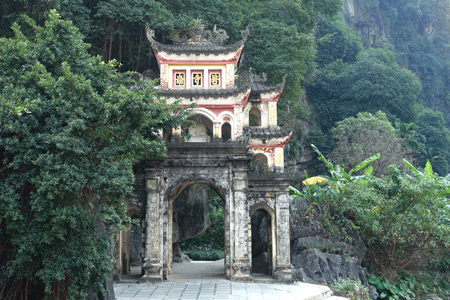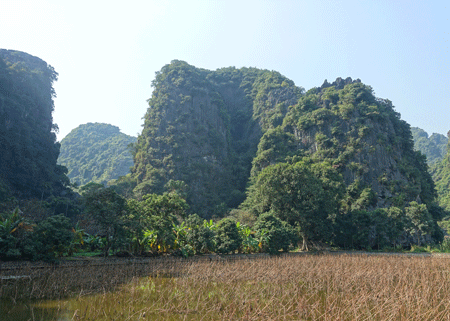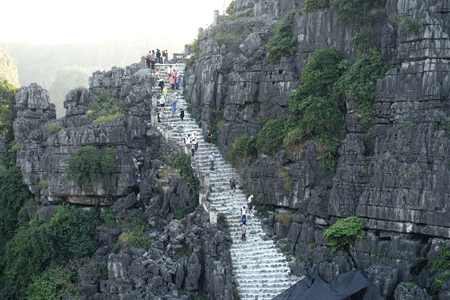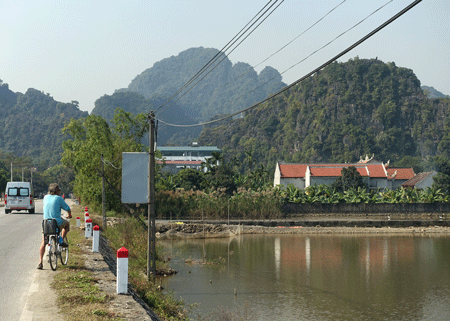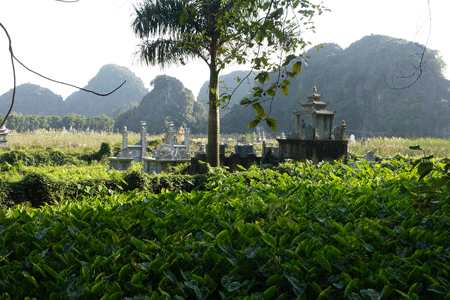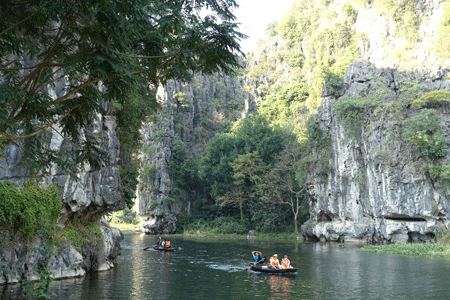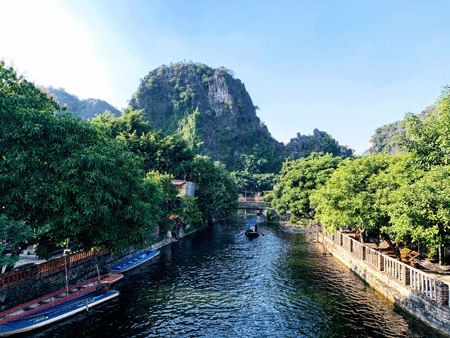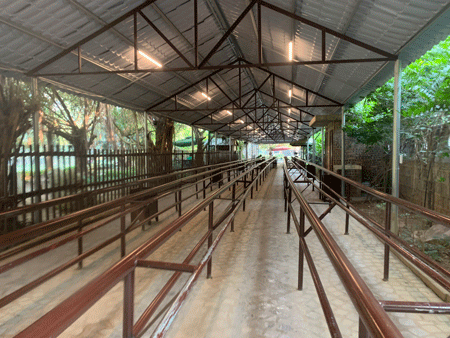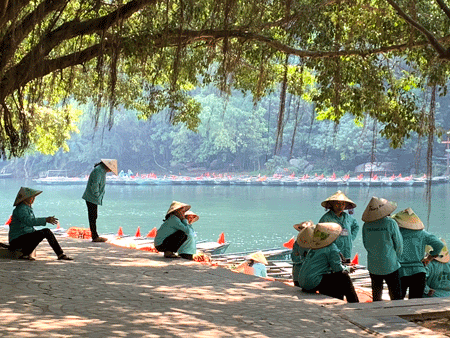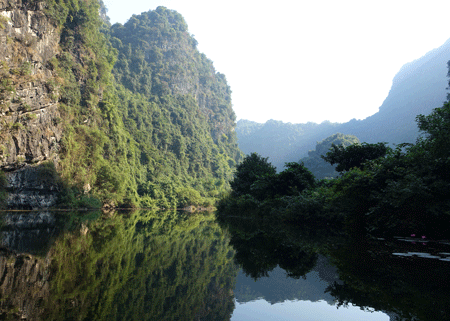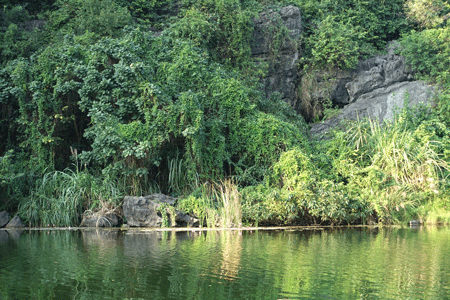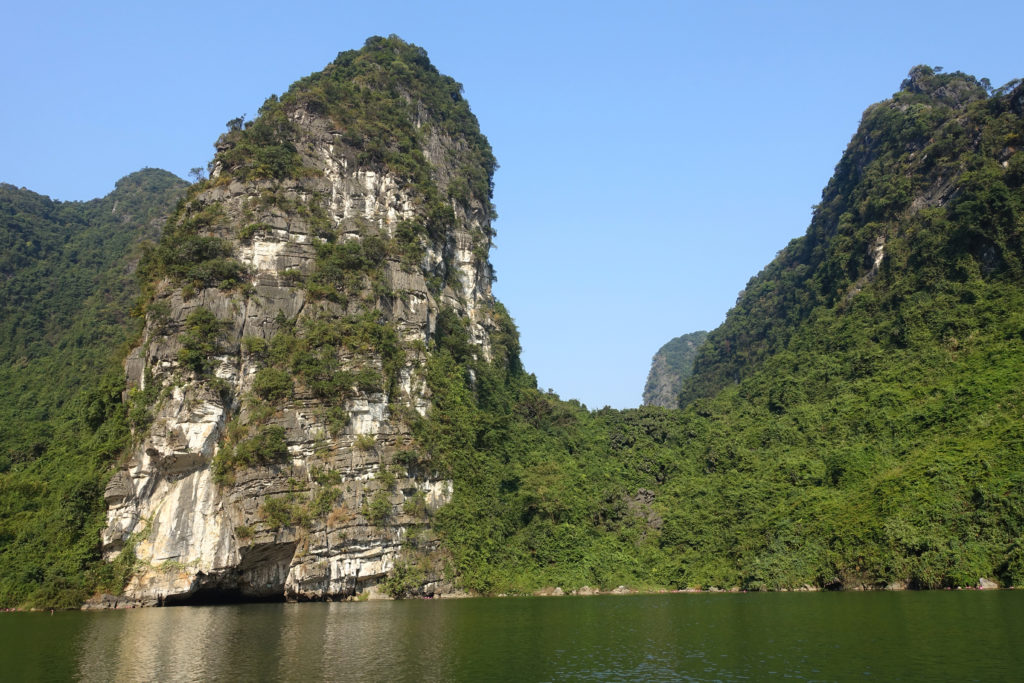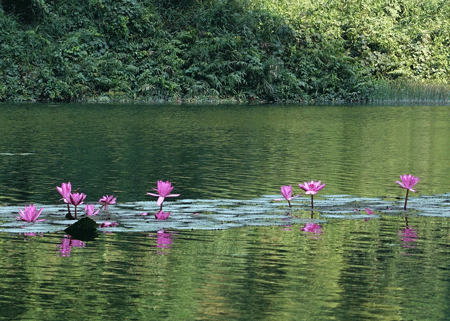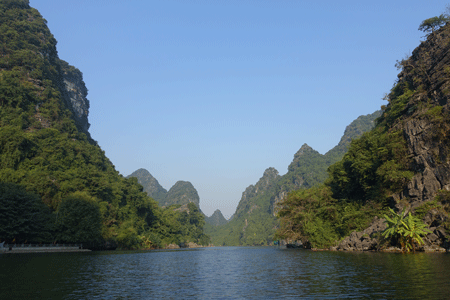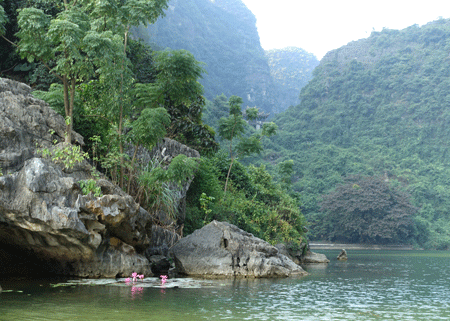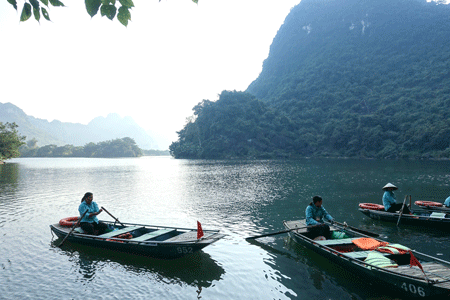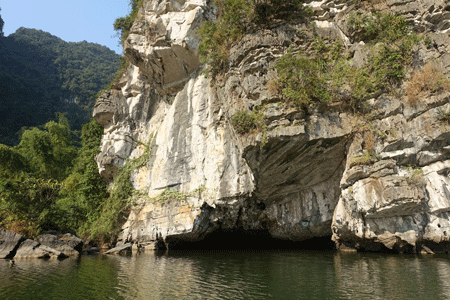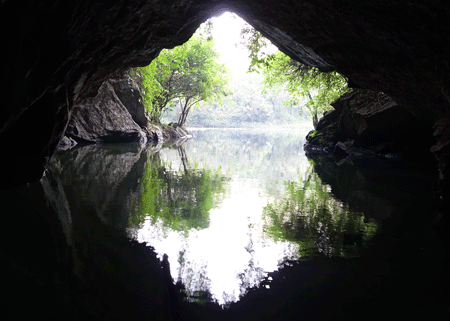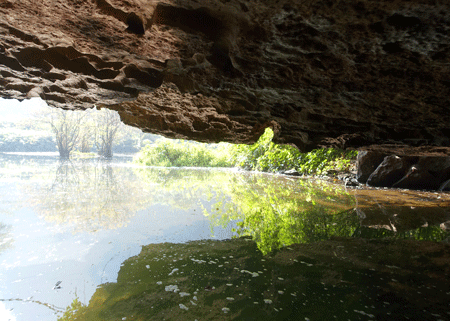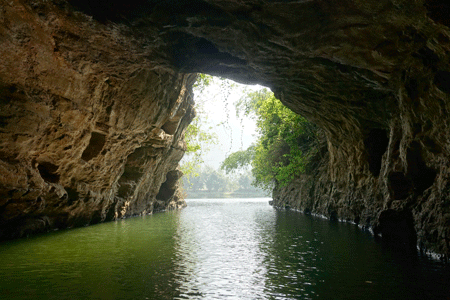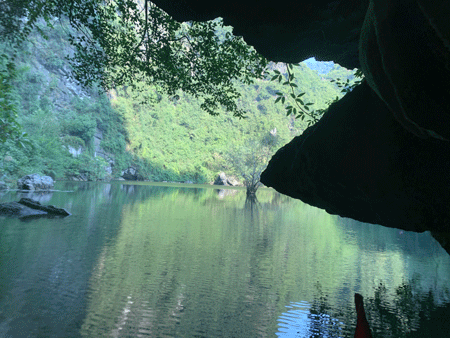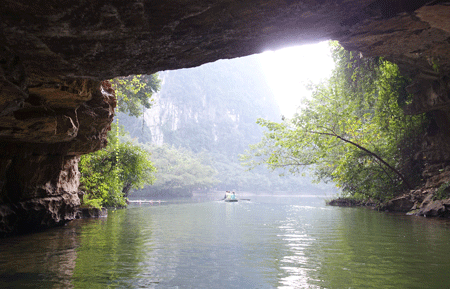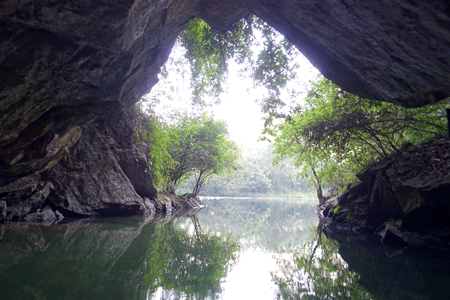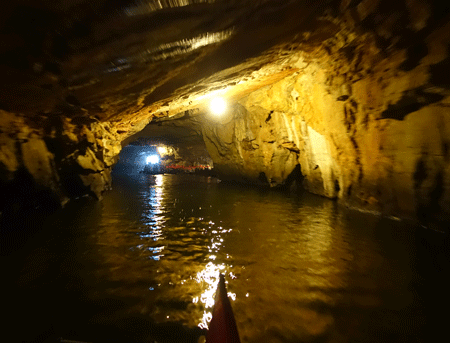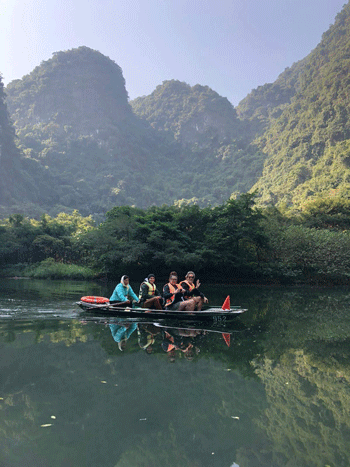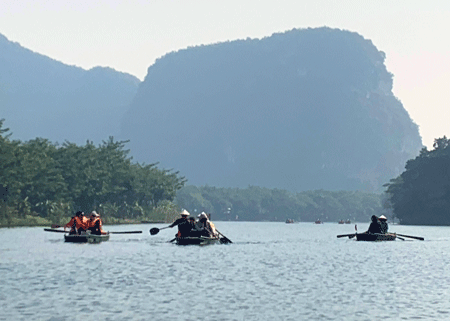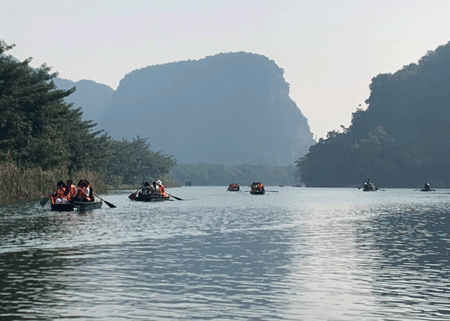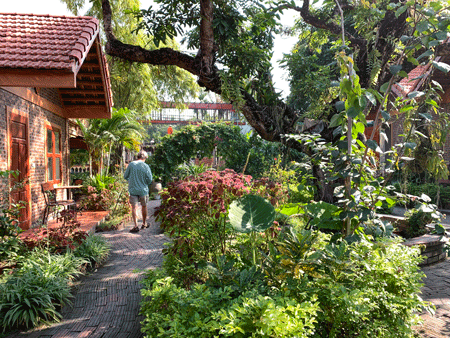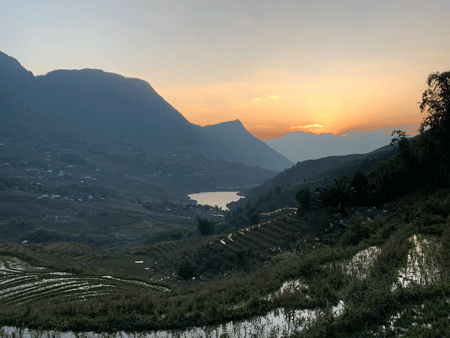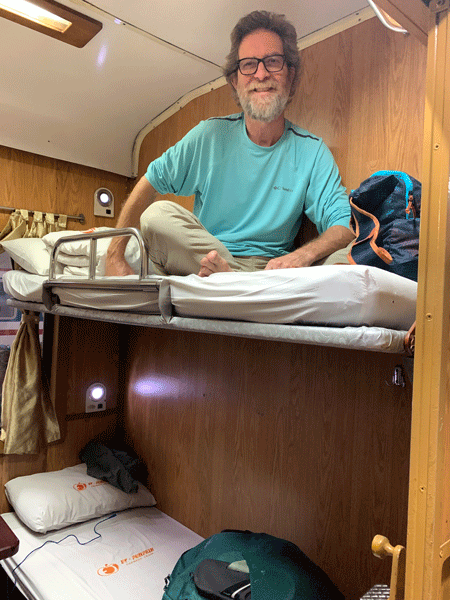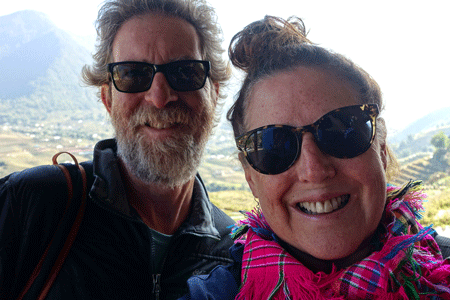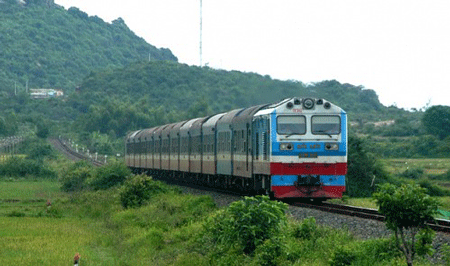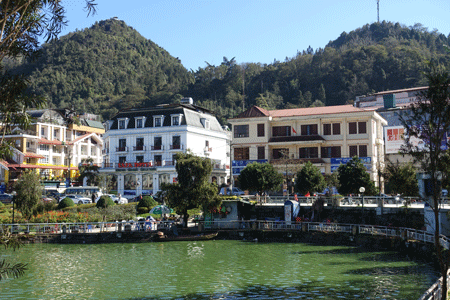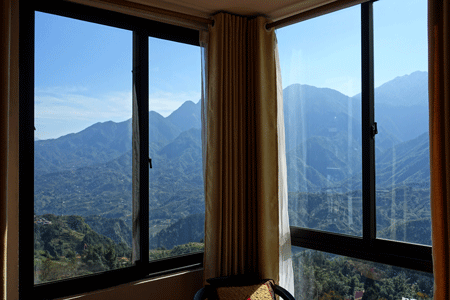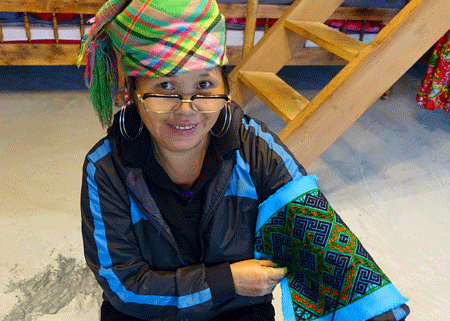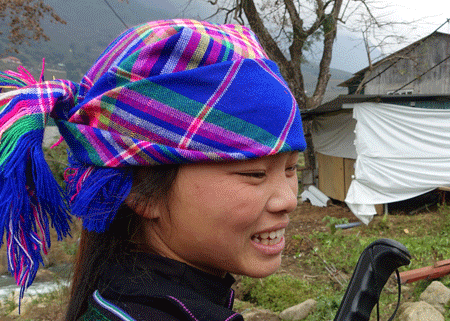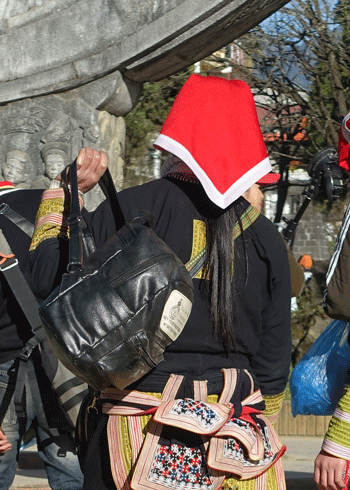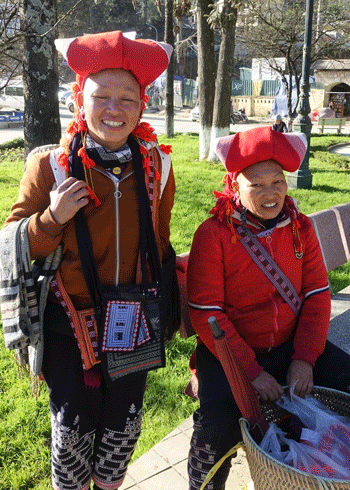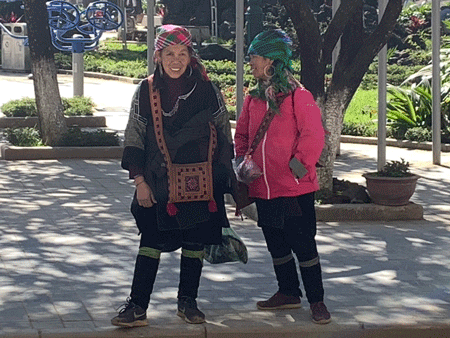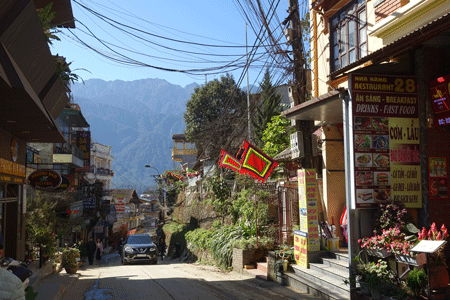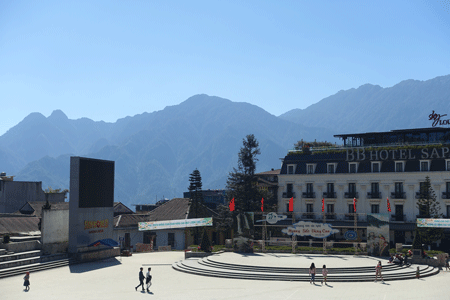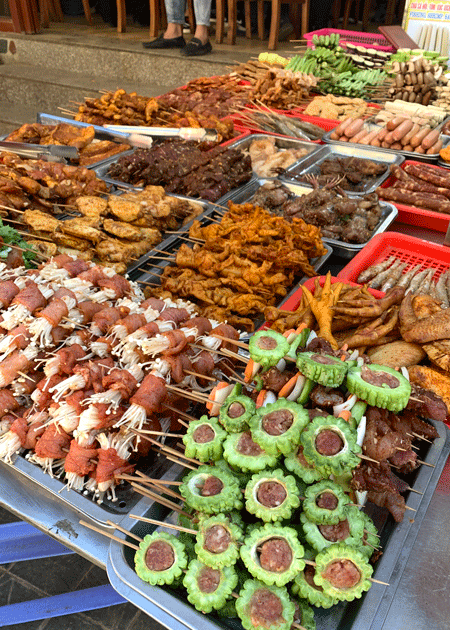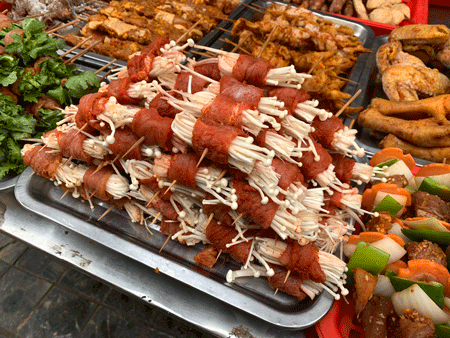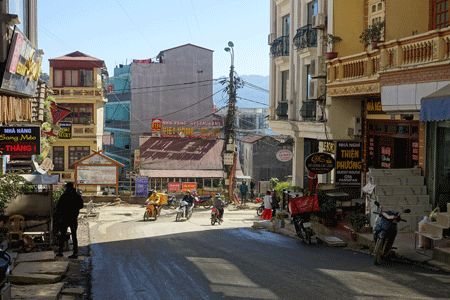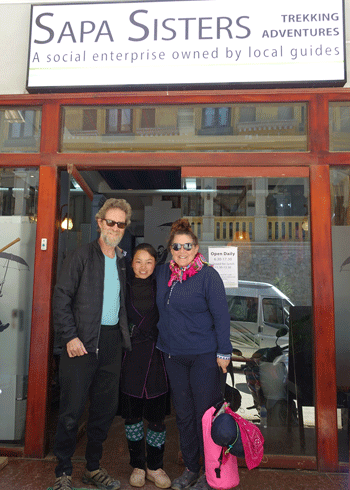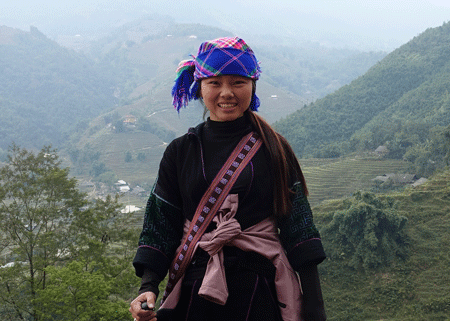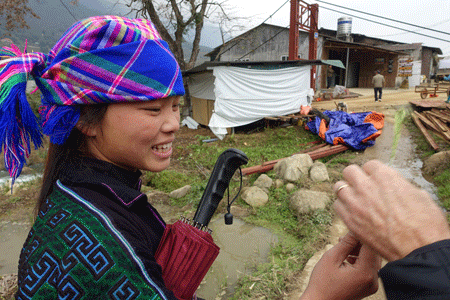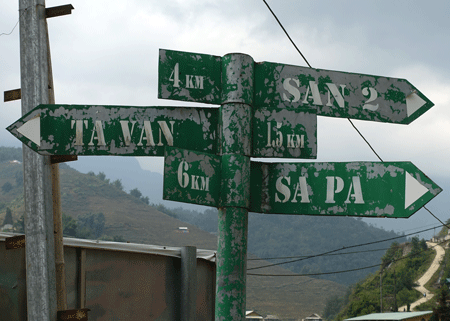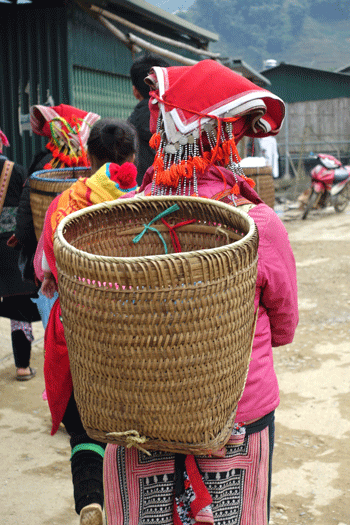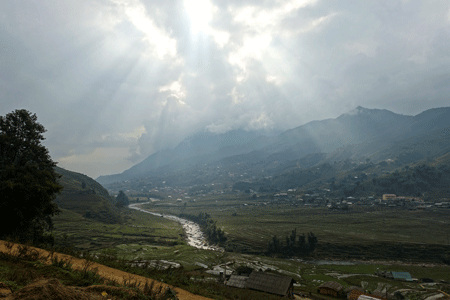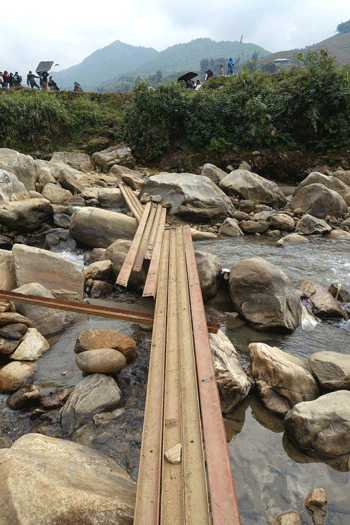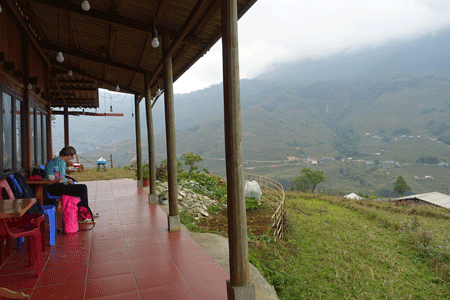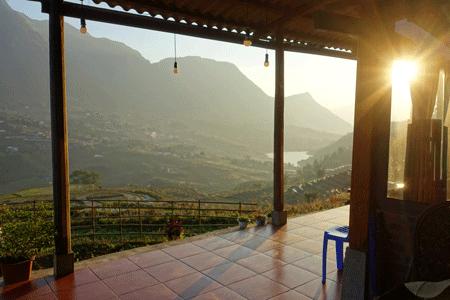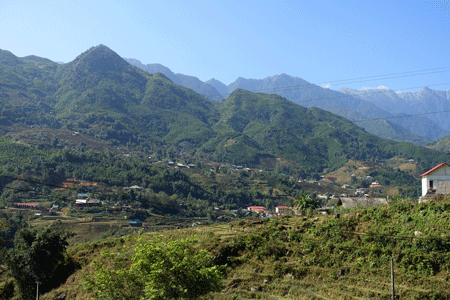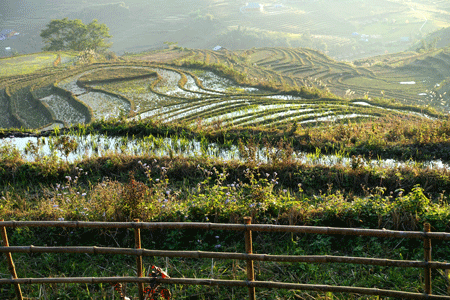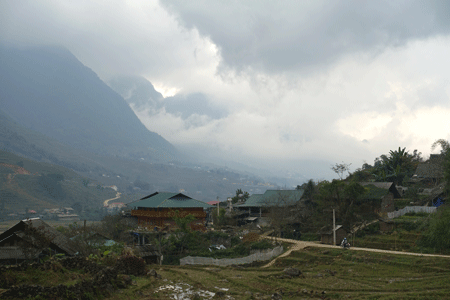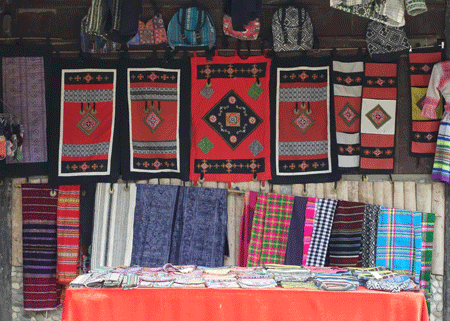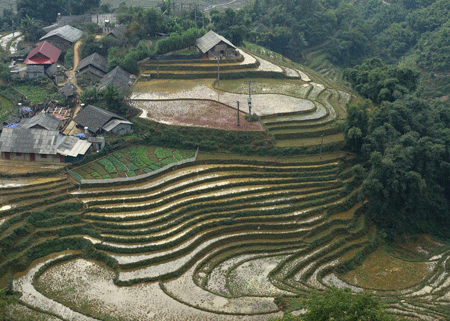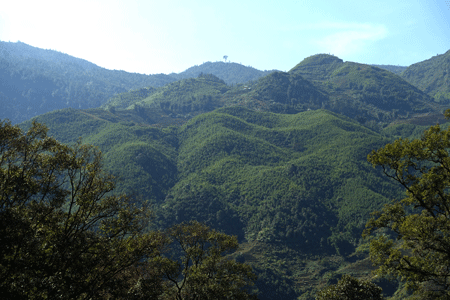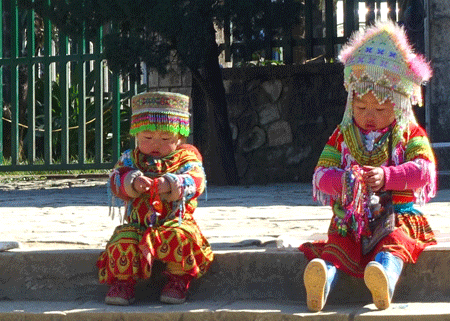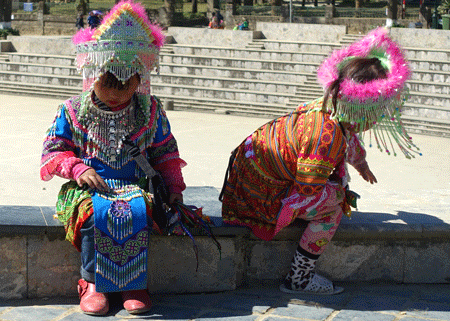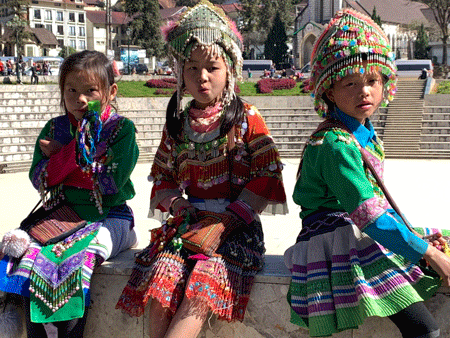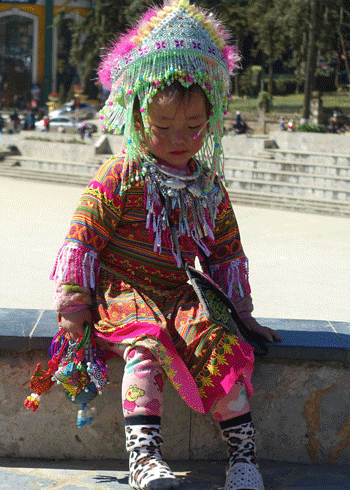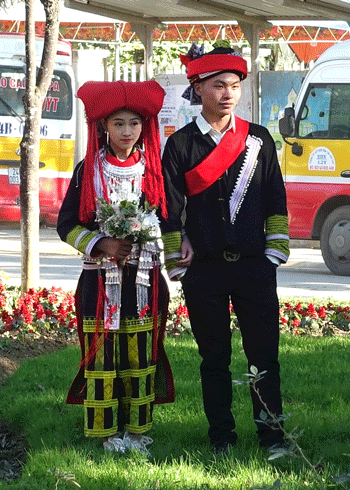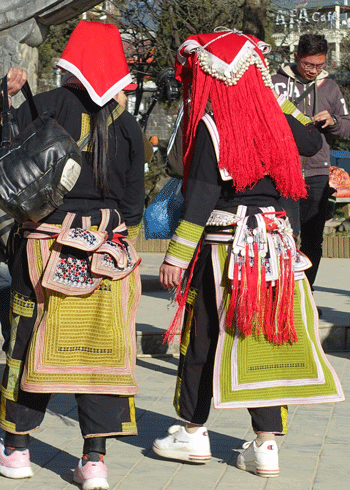Posted April 7, 2020
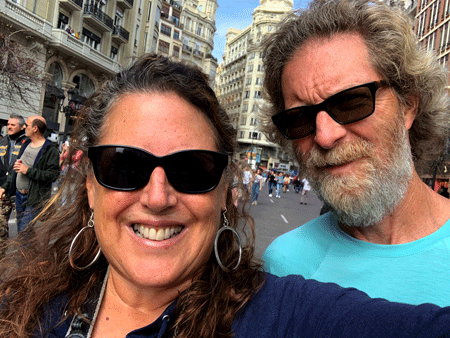
Winding Down
One final blog post to finish out our grand adventure. Steve and I started our journey flying from Seattle to Portugal, staying for a month, then on to SE Asia for almost five months, and lastly to Spain for ten days. We started out back on September 24, 2019….fast forward to day 172 of our trip, in the wee hours of March 12, 2020…
Buzzzz…Buzzzz
At the ungodly hour of 2:30 am, Steve’s phone buzzed and buzzed in the dark of our bedroom in Valencia, Spain. Even before the buzzing I was already a bit grumpy (ok, I was actually very grumpy), for a couple of reasons:
Lack of Sleep. I hadn’t slept soundly for the past eight nights. The annual Falles Festival, held in Valencia, was in full swing. The Festival celebrates St. Joseph with an outrageously loud and impressive explosives show in the main square, held at 2 pm daily, every day in March. Throughout the day, singing minstrels in traditional garb roam the streets, as well as large and small marching bands, and impromptu groups break into song on street corners. There’s festive partying in the streets at all hours, including just outside our apartment.
Worry over the Coronavirus. Being in Valencia during the Falles Festival would typically be a really fun time to visit the city, but the disconnect between having a large festival and a potential pandemic was difficult, and weighed on us. Madrid, a two hour train ride to the west, had already shut down, but Valencia was in 24 hour party-mode. The virus had been slowly ramping up over the past couple of weeks, but was suddenly accelerating at a quick clip the past few days, both in Spain (where we were staying) and in the Seattle area (where we are from and have family).
More Buzzing
The buzzing started up again. I rolled over and complained to Steve that his expletive phone was making me crazy. He sighed, reaching for his phone. Rolling his eyes (it was dark, but odds are good that he rolled his eyes), he answered. It was Jeremy, our 25 year old son, phoning. I knew it had to be something urgent, since our phone plan doesn’t cover calls, but here was Jeremy phoning.
Can You Hear Me Now?
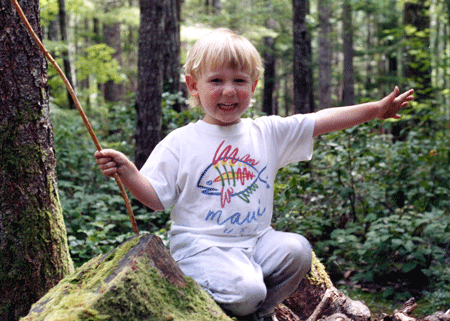
Jeremy has always had a loud, booming voice. At the age of four we decided to have him tested for possible hearing loss, since speaking loudly can be a sign of a hearing issue. Turns out he has perfect hearing.
Anyway, I could clearly hear Jeremy through Steve’s phone. In a loud and firm voice, he said:
“DAD, YOU MUST WAKE UP RIGHT NOW”. He had our full attention.
A Text Thread for the Ages
I sat up and grabbed my own phone off the side table. It had been in silent mode. I stared at the screen. I had twelve missed texts.
Key takeaways:
“So mom and dad are fucked?”
“They might be”
“Holy shit I can’t believe it”
Yeah, I couldn’t believe it either. I sat cross legged on the bed among the disheveled sheets and blankets, in a haze of shock, rubbing the sleep from my eyes. Was this true? Could this really be happening? Were we going to be locked out of our country?
Were we, as our son so eloquently put it, fucked?
The Deadline
Steve had gone into the living room. I have no idea what he was doing, but he was probably pacing. Still sitting on the bed, I started searching YouTube and Google for President Trump’s speech. Nothing seemed real, and I thought seeing the speech myself would help make it so. I wasn’t having much luck. It was too soon and nothing was posted online yet. At that point, all we knew was that Trump had made the announcement that no flights originating in Europe, except from the U.K., could land in the United States starting at midnight on Friday the 13th for a minimum of thirty days.
We had 30 hours.
I vaulted from the bed and turned on all the lights in the apartment (for no apparent reason). It just felt like the right thing to do. I arrived back in the bedroom and got fully dressed, including a bra.
Looking back, that’s how I knew it was serious. Putting on a bra is a commitment that says, yep, it’s time to leave. No time to lounge. It’s like I’d be leaving the apartment and the country right then and there, at 2:30 am. I frantically looked around the room. I flipped open my backpack, thinking I should start packing immediately. We had to move fast! I stopped…wait a minute, we need to make some plans first, right?
Thirty Hours or Thirty Days
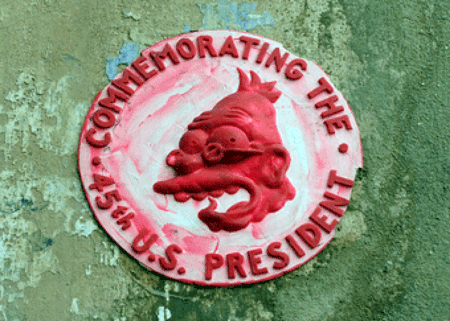
Joining Steve in the living room, I flipped open my laptop and started the search for flights home. Unfortunately Trump’s announcement didn’t include many specifics, so we had to make some assumptions. What time-zone applied to the deadline? We assumed Eastern Standard time, eight hours behind us.
At that point, we had to assume we would be locked out of the United States for at least 30 days if we didn’t get home by the deadline: Friday the 13th at midnight.
Hurry Up
My heart was racing. My laptop was loading way too slowly for my practically non-existent patience. There was some exasperated yelling (by me, at my laptop), which wasn’t making websites load any faster. Every flight offered to Seattle would land us at SeaTac International Airport after midnight, March 13. Perhaps we were fucked, after all. Taking deep breaths to try to gain some perspective and calm myself, I started looking at any flight that would deliver us in time, anywhere in the United States.
Ahead of the Curve
Thankfully our son, Dylan, had been watching the President’s announcement and acted quickly. Because our kids persisted in waking us up, we were ahead of the flight search onslaught that ramped up only a few short hours later. With the time difference, most Americans traveling in Europe didn’t hear about the new mandate (and deadline) until they woke up the next morning. By then it was getting very difficult to find a decent flight home.
I frantically searched for over an hour, finally securing a flight that would get us to the United States by the deadline. We’d leave Valencia later the same day, at 6:00 pm. We’d fly to Lisbon, with a fifteen hour layover, then take a fourteen hour flight to the west coast (San Francisco) of the United States. With the 8 hour time difference in our favor, we’d arrive in the U.S. with five hours to spare.
Sunshine & Tapas
It had been an insane night, and we couldn’t get back to sleep. We didn’t even try. We did our best to enjoy our last morning in Valencia. The sun was shining and throngs of tourists (and locals) meandered the cobblestone streets, with not a care in the world.
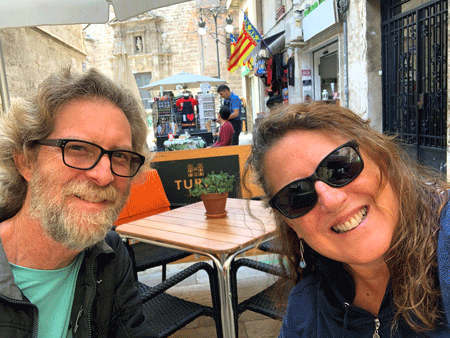
We sat at an outdoor cafe (suitably distanced from others), enjoying our favorite tapas one last time. It was astonishing to see so many people going about their day as usual. I wondered aloud, “How long until their world would turn upside down?” Little did we know at the time, but the people of Spain had only one more day of “freedom” before a country wide shelter-in-place order was enacted.
Time To Go
As we stood in line on the tarmac at the airport, waiting to climb the stairs to board the plane, a twenty-something year old woman and her boyfriend were reminiscing about how lucky they were to have booked this flight out of the country. Still up and drinking at 2:30 am had saved them. Drunk, but not too drunk to comprehend Trump’s announcement. Drunk, but not too drunk to book a flight home.
Lisbon International by Night
Lisbon Airport is a large, modern, gorgeous airport full of upscale shops and restaurants. Unfortunately it doesn’t have great overnight options, and our layover ran from 7:00 pm until 10:00 the next morning.
We knew we had to find a place to land for the night. We had fifteen hours until our next flight and our options came down to:
#1) The couch like seating in the busy food court, or
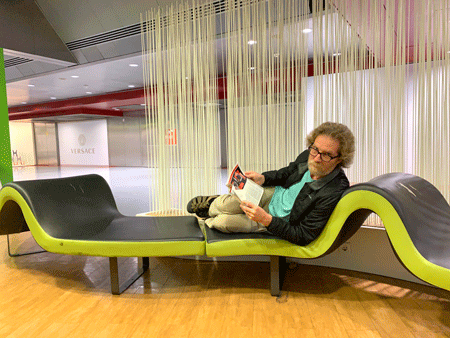
#2) A group of “recliners” we’d read about online that (unfortunately) turned out to be rock hard and uncomfortable, or
#3) A group of six black vinyl covered stubby “couches” (with dirty lime green trim) tucked down a long corridor by Gate 14, with sparse (and strange) beige plastic tubes hung from the high ceiling in a pathetic attempt to screen the couches from the hallway. Each couch had a poorly placed hump that looked like it was supposed to be a pillow of sorts, but only served to make it impossible to lay down comfortably.
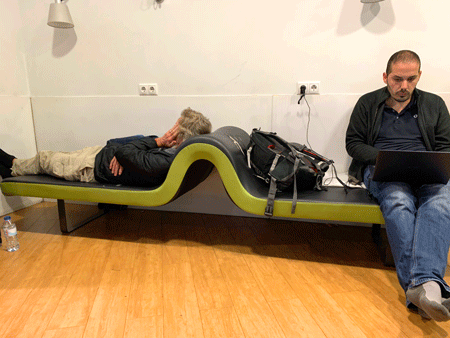
We went with option #3. I huddled on a too short “couch”, in the freezing cold, brightly lit airport terminal all night, hugging my backpack so no one would steal it, trying to sleep.
Thankfully there are no flights between approximately 1:00 to 5:00 am, so the airport cleared out of all traffic, except for us diehard overnighters.
We thought we’d at least get a good sleep during those 4 hours. Little did we know what lie ahead.
Cleaning Up
I’m one of the lucky few who know exactly how one of those large, riding floor polishers sounds as it makes its way back and forth on the expansive linoleum floor in the dead of night. And it’s not pretty.
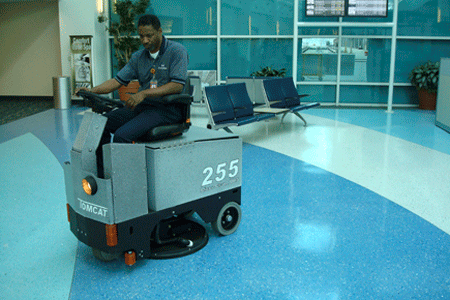
From the dead quiet of the eerily empty terminal comes a distant quiet rumbling, like an oncoming earthquake. The rumbling grows louder and louder as the polisher approaches and the floor shakes. There’s the loud sound of a motor and swooshing polishers echoing in the cavernous terminal as the polisher reaches us and slides past the little black couches full of weary travelers, each tucked into the fetal position, trying desperately to stay warm and keep up off the floor. Then the process reverses as the polisher gets further away, sliding down in the opposite direction, until finally everything returns to calm and quiet.
There’s a brief respite, when I’d almost get to sleep, then the polisher travels back up the corridor towards us for a second pass, and a third pass, and a fourth pass, and on and on…. I’d been awake for over 24 hours. I was exhausted and dazed to the point of delirium.
Thankfully everyone in the overnighter club was keeping to themselves. In those wee hours, no one tried to engage me in conversation, including Steve, or they may not have come out of it alive. I just wanted to make it through the night and get on that 10:00 am flight to San Francisco.
Under the Wire
Next up, a fourteen hour flight to SF International. For some reason (shock, exhaustion, disbelief, insanity) I couldn’t sleep on the flight, despite being so tired. So the non-sleep induced stupor continued.
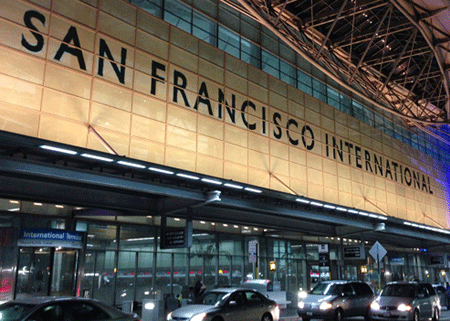
We landed in San Francisco and approached customs where we got in the crowded, circuitous line to see an agent for permission to enter the USA. We had under five hours to spare before the midnight deadline.
I could barely stand and felt myself rocking back and forth on my feet, almost drifting off, as I made my way, ever so slowly, towards the customs agent, one step closer to home.
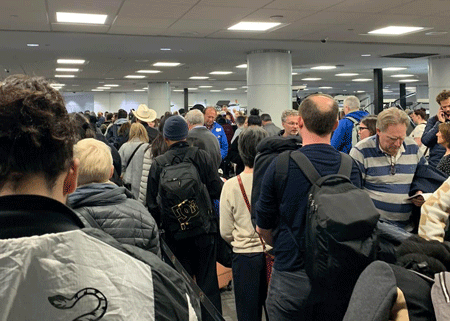
We stood packed in tight with other relieved European travelers, happy to be beating the deadline. A higher than normal percentage of our fellow travelers were college students being sent home after their study abroad programs had been abruptly cancelled.
The college students, recognizing one another as fellow students in the same boat, talked across the crowded room. We all felt a kind of camaraderie.
“Where are you coming from?”, they’d ask each other.
“Berlin”
“Amsterdam”
“Lisbon”
“Paris”
We were from all over Europe and now we were all standing together in a weaving line, bunched together and waiting. For an hour and a half. After weeks of trying our best to stay away from crowds it felt like we were breaking all the rules, and we were.
Finally, it was our turn to approach the customs agent.
“What city did you fly from?”, asked Mr. Customs Agent.
“Valencia, Spain”, we answered.
“Business or pleasure?”, asked Mr. Customs Agent.
“Pleasure”, we answered.
“Welcome Home!”, says Mr. Customs Agent.
It’s All Good
And that was that. The agent asked nothing about how long we’d been traveling, if we’d been to any of the Coronavirus “hot-spots”, if we were feverish or feeling ill.
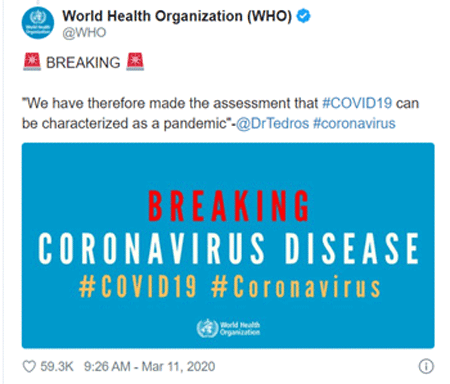
Even though the Coronavirus was deemed a worldwide pandemic just two days prior on March 11th, entering the USA was business as usual. There was no information posted anywhere in the airport and nothing was said to us about what to do if we had Coronavirus symptoms in the coming days. There were no instructions or suggestions to quarantine ourselves (especially if we’d come from an area of high infections). No information on the virus at all.
Taking Action
What a stark contrast to our experiences in Southeast Asia. In a time when days, even hours, count in battling this virus, we had expected much more upon entering the States. Well, certainly more than nothing.
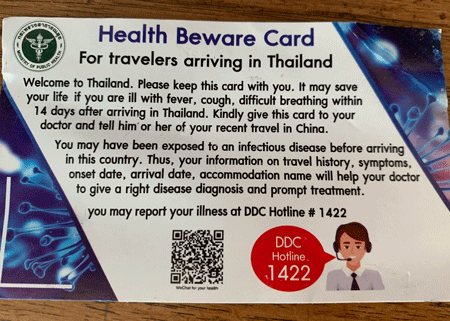
Twenty-five days prior, on February 18th, we entered the Bangkok airport from Vietnam. Before we could walk into the airport a worker took our temperature and handed us a Coronavirus information card, complete with medical hotline phone number.
And, as long ago as February 21st, workers took our temperature while we boarded a small ferry boat in southern Thailand.
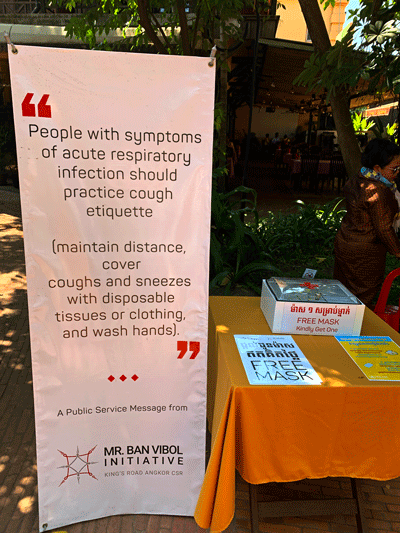
Even in Cambodia, thirty-four days prior (about February 9th), we encountered Coronavirus public service message tables, complete with pamphlets and free masks at remote shopping centers.
And fifty-three days prior, back on January 21st, while in Saigon, Vietnam, all schools had already closed. But entering the United States from overseas at a major airport on March 13th, over seven weeks later – nothing.
The next day we took a flight home to Seattle. Again, we didn’t see any evidence of a world pandemic.
The Final Weeks
The last three weeks of our trip were a bizarre combination of fun, relaxation, anxiety, and concern. We’d spend most of the day relaxing and enjoying ourselves, interspersed with listening to live briefings on the Novel Coronavirus from the CDC (Centers for Disease Control) and WHO (World Health Organization) on YouTube.
We spent two weeks in southern Thailand, first at Aonang Beach in Krabi, then at Klong Dao beach on the island of Koh Lanta, enjoying the sunshine, reading, swimming, and eating lots of good, cheap Thai food. But concern about the spreading Coronavirus was never far from our thoughts.

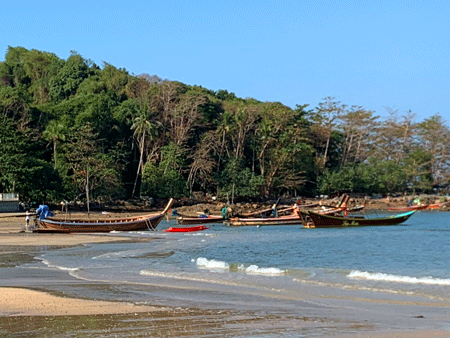
Then on to Spain for ten days.
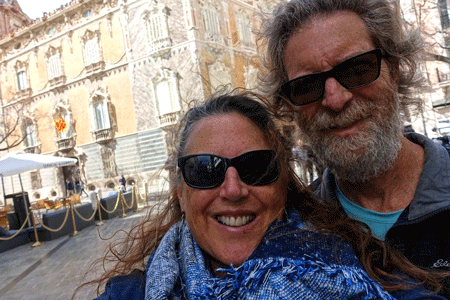
It certainly wasn’t the ending I had envisioned, the Novel Coronavirus saw to that.
Even so, it was an amazing trip. Amazing in every way. I’m thankful for each and every day of our travels, and for the fact that we were nearing the end of our trip when we had to cut things short.
Trip Itinerary:
Portugal
- Lisbon, 5 nights, Sept 25-30, 2019
- Sintra, 2 nights, Sept 30-Oct 1
- Lagos, 3 nights, Oct 2-4
- Salema, 4 nights, Oct 5-8
- Evora, 3 nights, Oct 9-11
- Tomar, 2 nights, Oct 12-13
- Coimbra, 3 nights, Oct 14-17
- Porto, 6 nights, Oct 17-23
- Lisbon, 1 night, Oct 23-24
Thailand
- Bangkok, 4 nights, Oct 25-29
Myanmar
- Yangon, 4 nights, Oct 29-Nov 2
Thailand
- Chiang Mai, 10 nights, Nov 2-12
- Chiang Saen, 3 nights, Nov 12-15
- Chiang Rai, 5 nights, Nov 15-20
- Chiang Mai, 1 night, Nov 20-21
Vietnam
- Hanoi, 3 nights, Nov 21-24
- Ha Long Bay, 1 night, Nov 24-25
- Hanoi, 7 nights, Nov 25-Dec 2
- Overnight Train North to Sapa, 1 night, Dec 2
- Sapa, 4 nights, Dec 3-7
- Overnight Train South, 1 night, Dec 7
- Tam Coc, 4 nights, Dec 8-12
- Dong Hoi, 3 nights, Dec 12-15
- Hue, 3 nights, Dec 15-18
- Hoi An, 6 nights, Dec 18-24
- Beach Hoi An, 9 nights, Dec 24-Jan 2, 2020
- Quy Nhon, 7 nights, Jan 2-9
- Nha Trang, 7 nights, Jan 9-16
- Dalat, 5 nights, Jan 16-21
- Ho Chi Minh City (Saigon), 9 nights, Jan 21-30
- Phu Quoc, 10 nights, Jan 30-Feb 9
Cambodia
- Siem Reap, 9 nights, Feb 9-18
Thailand
- Krabi, Aonang Beach, 3 nights, Feb 18-21
- Koh Lanta, Klong Dao Beach, 10 nights, Feb 21-Mar 2
- Krabi Town, 1 night, March 2-3
Spain
- Madrid, 1 night, Mar 3-4
- Valencia, 9 nights, Mar 4-13
Wins and Losses
Wins
Traveling and exploring for 173 days was so much fun. So. Much. Fun.
The food. Food has got to be one of the best things about traveling.
Learning how to make do with little. Traveling on a tight budget and with a small backpack for six months will do that for you.
Walking through spectacular historical ruins, seeing amazing sights and breathtaking beauty, immersing in other cultures, and experiencing unforgettable moments (often embarrassing or comical- see previous posts).
Getting comfortable pivoting on a dime, making last minute plans. No time to research for days, weeks, or months…just dive in.
Enjoying almost six months of round-the-clock togetherness with Steve. We did “better than average” according to Steve, which, coming from him, is very high praise indeed. But seriously, I’d give us a straight “A”. We had a wonderful time together, including celebrating our 35th wedding anniversary in February!
Meeting and making friends with so many people from all over the world – both locals and fellow travelers.
Feeling like we’ve earned the title of veteran travelers! Can’t wait for the next trip!
Losses
When our Spanish hostess arrived on March 4th, well into the Coronavirus outbreak, to greet us and suddenly kisses me on both cheeks. WTF! No kissing strangers in the days of Coronavirus!
Missing out on that last 4-6 weeks of traveling. Not having time to visit Laos, Malaysia, Taiwan, or Bali – or wherever. There’s always next time.
People ask “What was your favorite place?” That’s impossible to answer, so we’d say, “Everyplace was the best place”. And that’s the truth.
